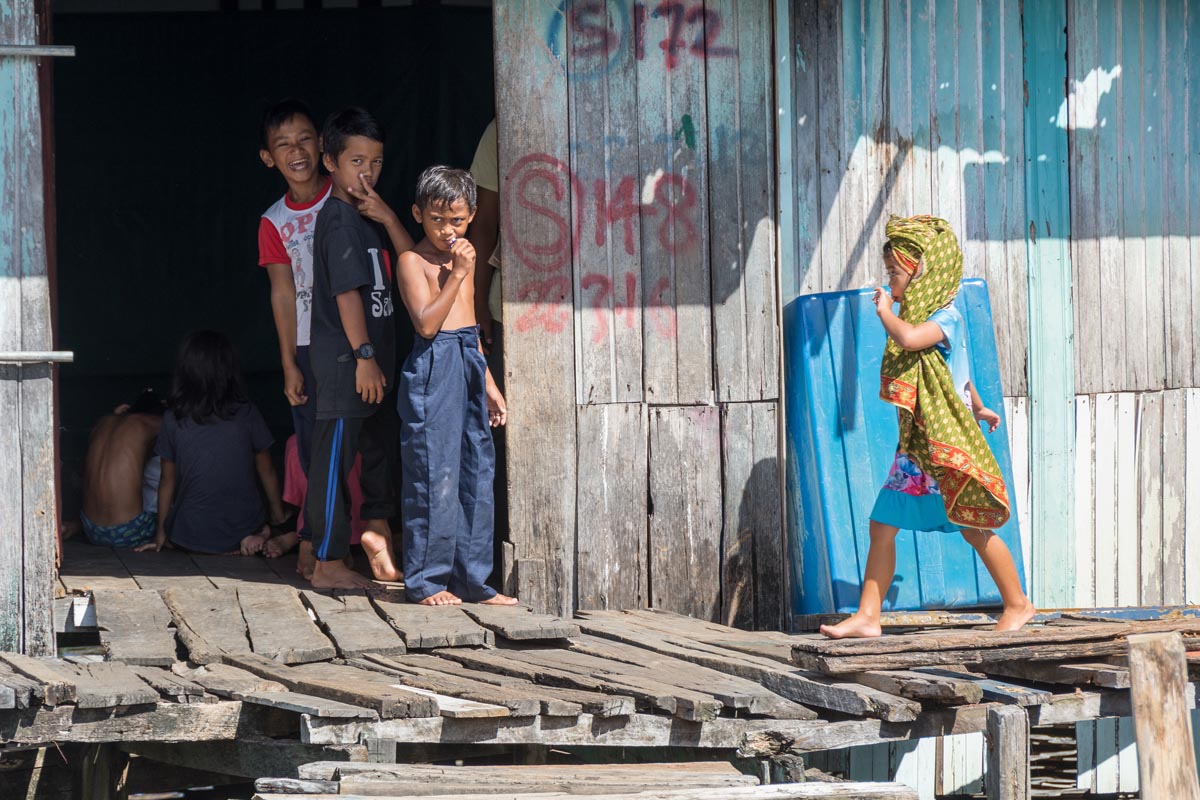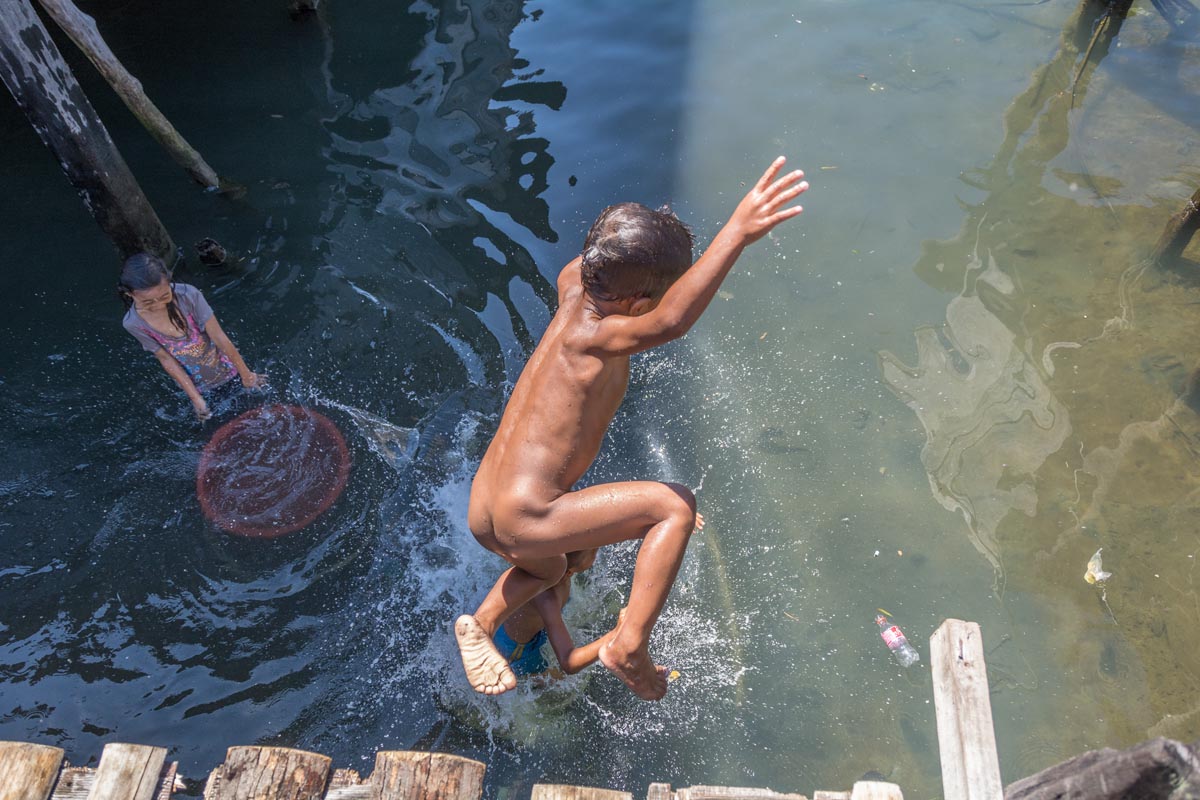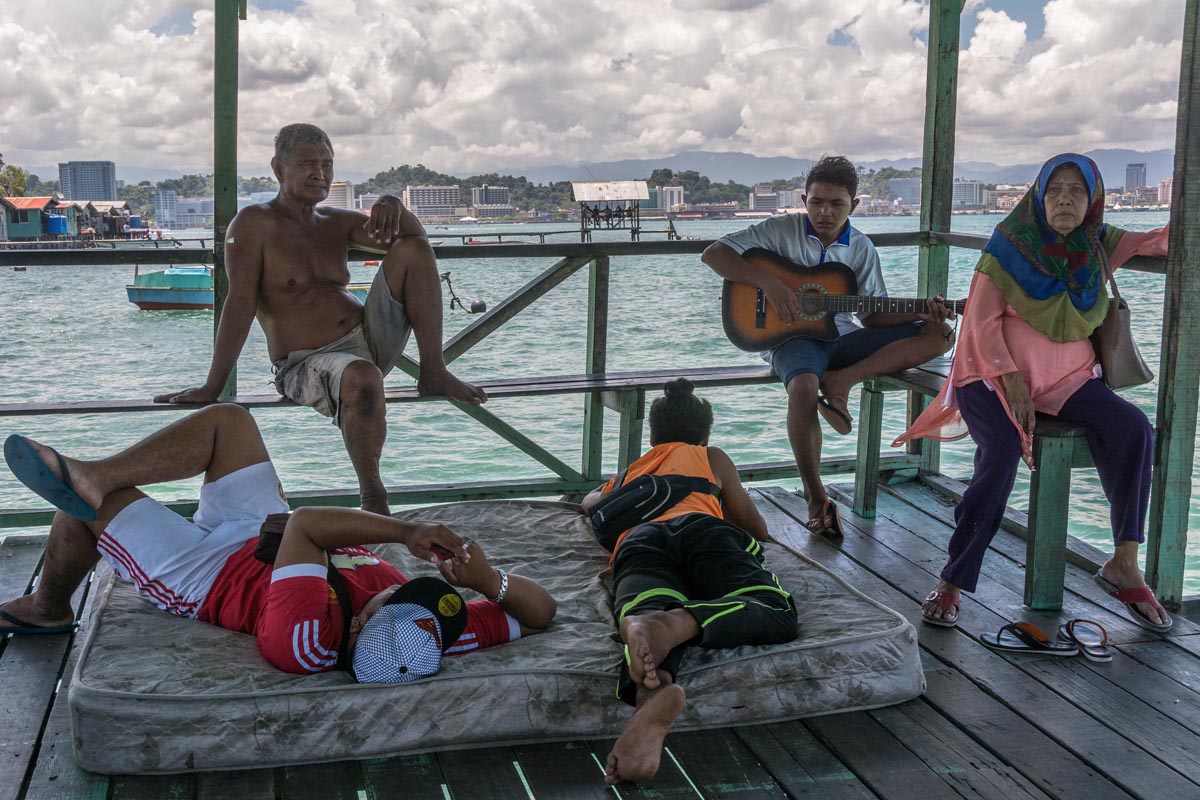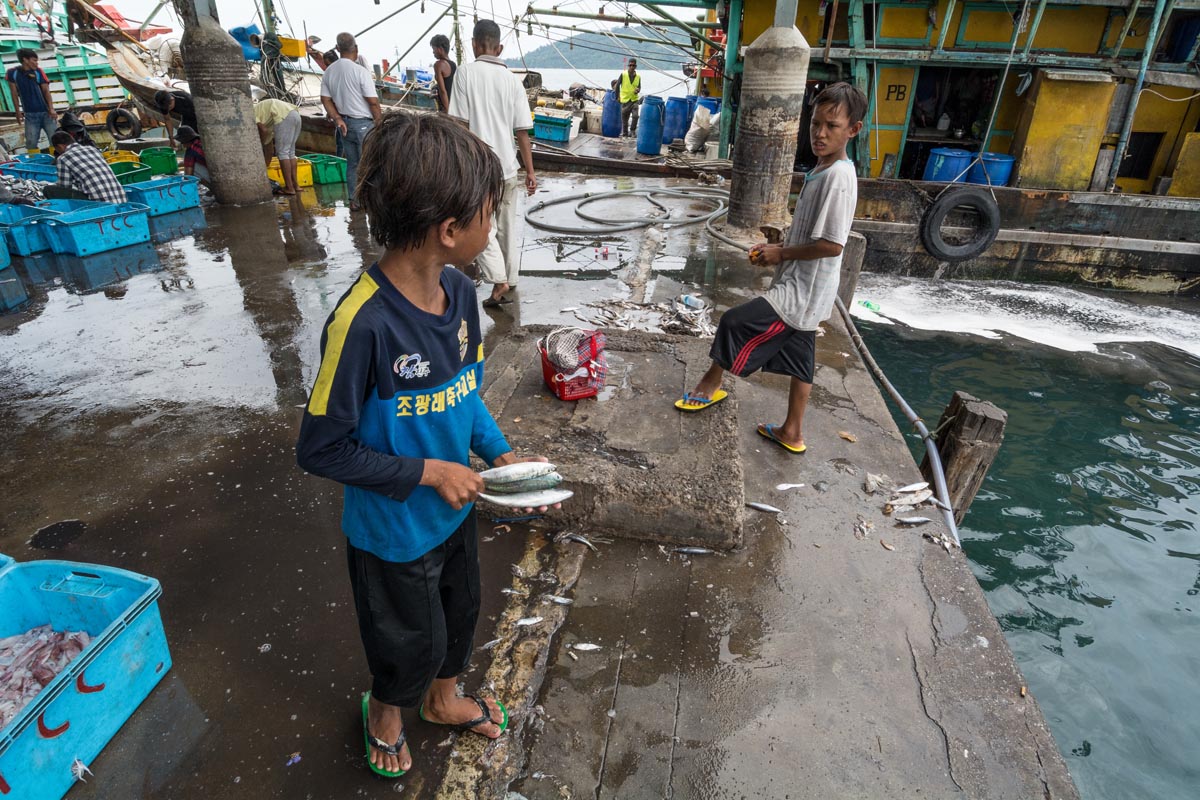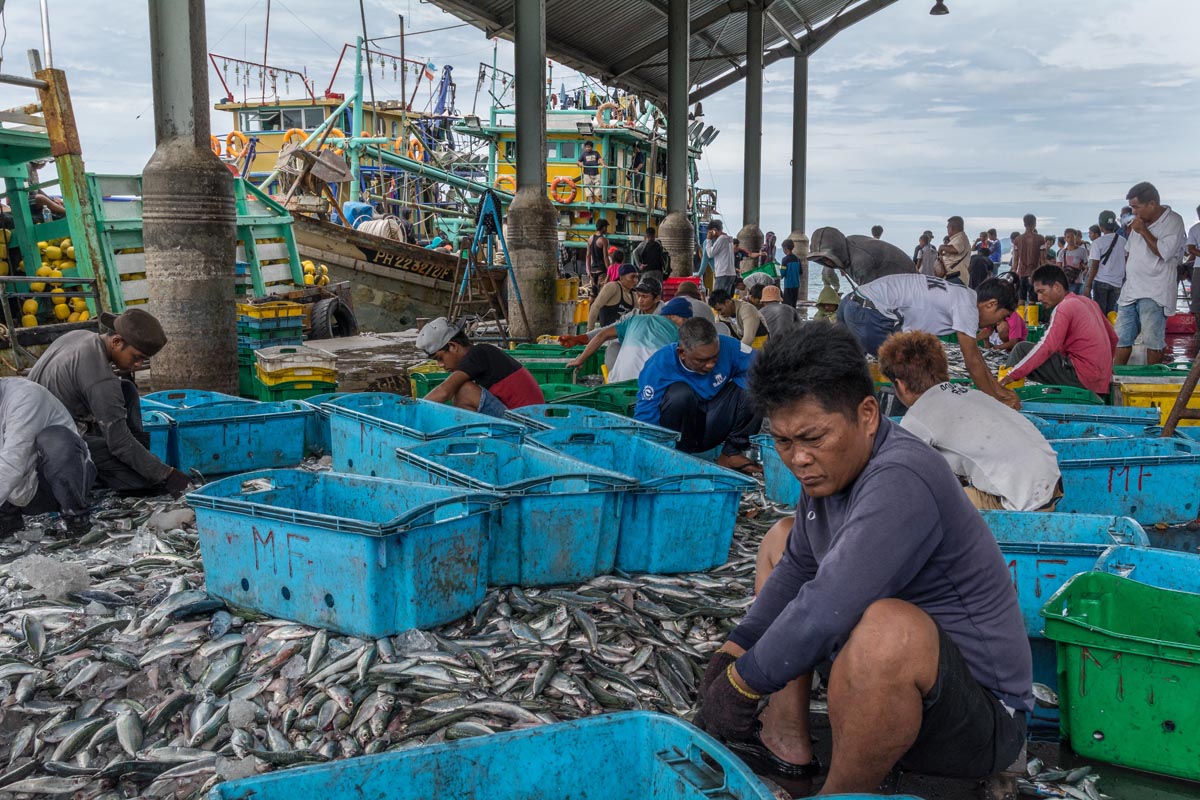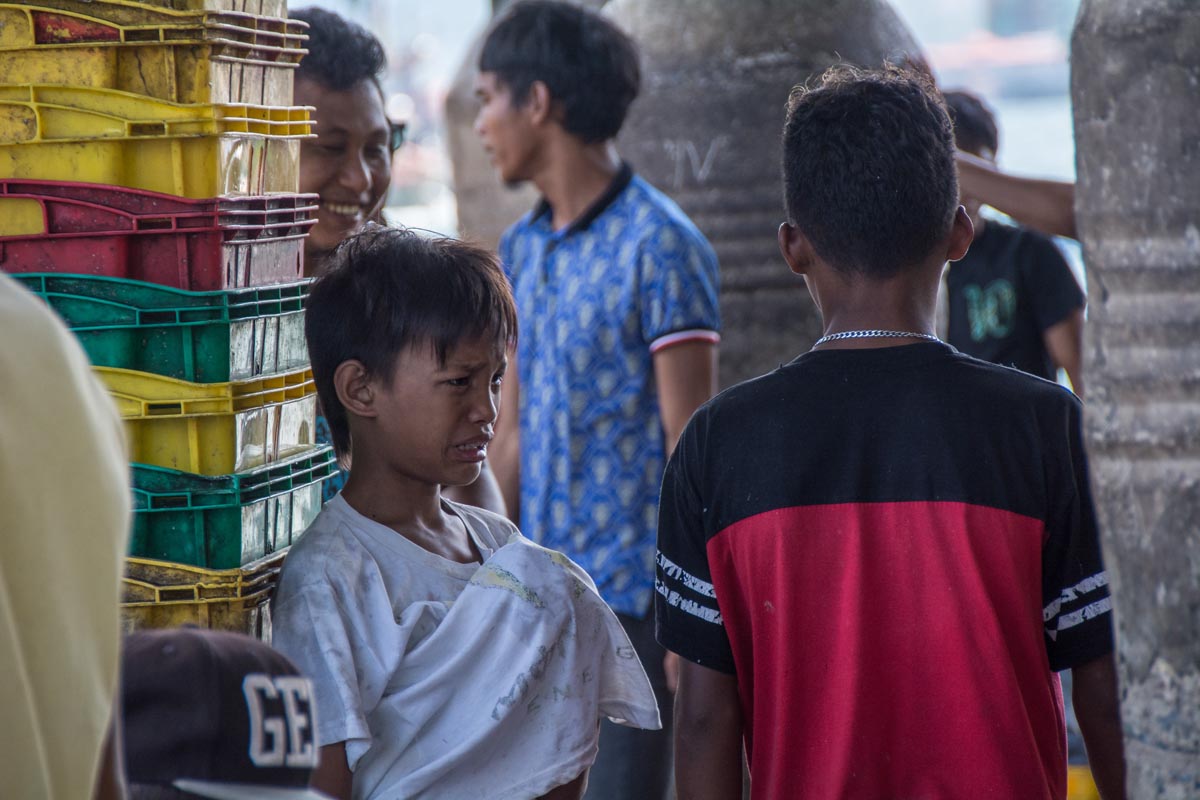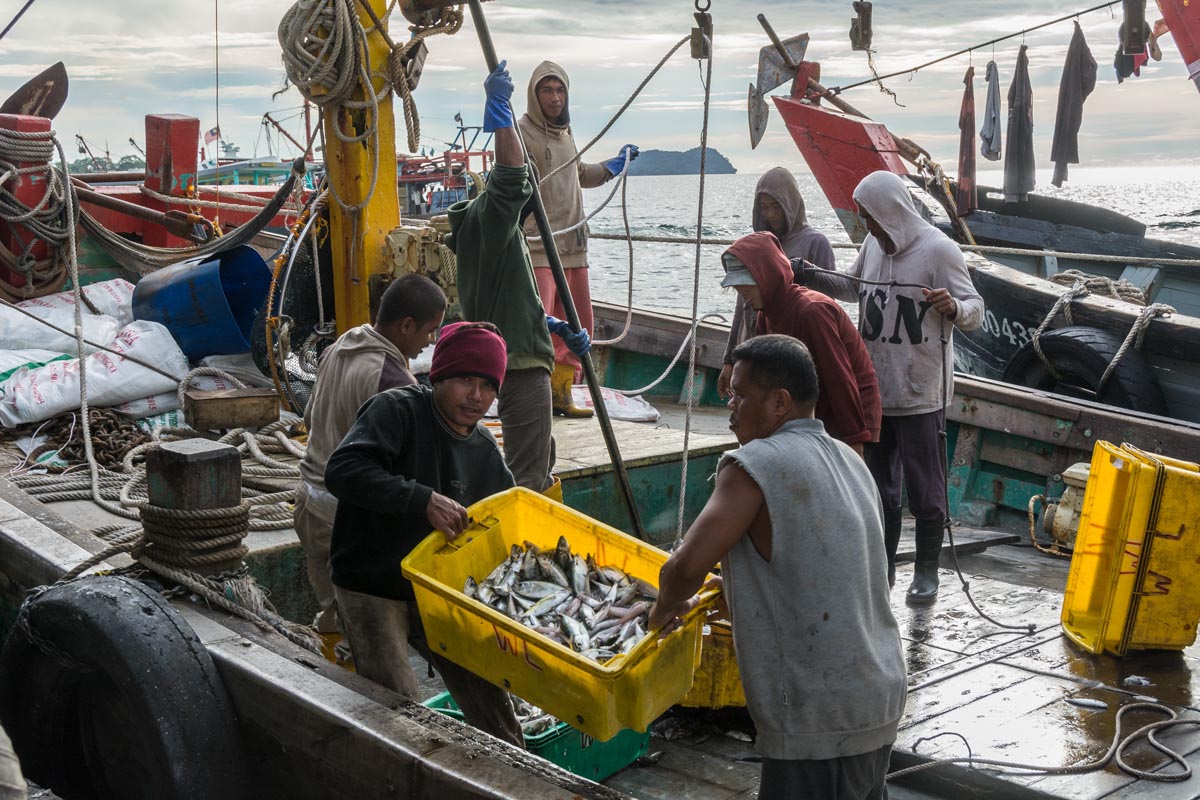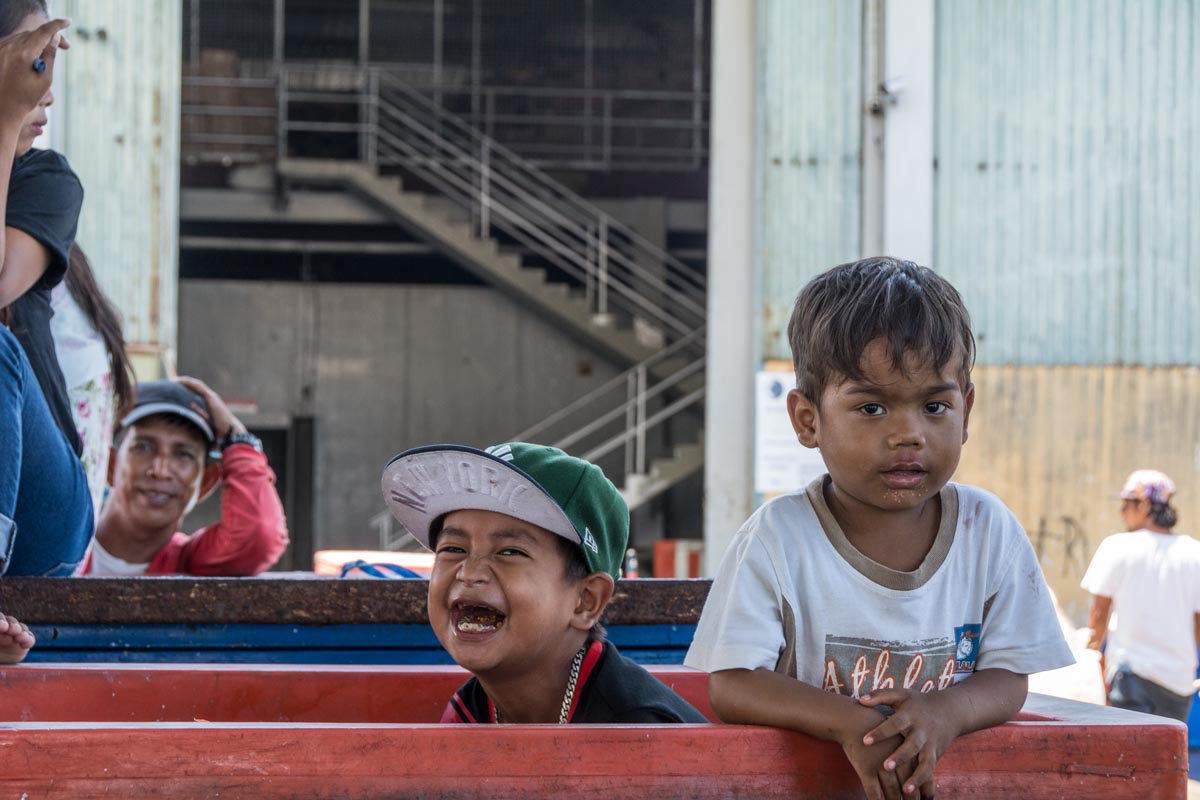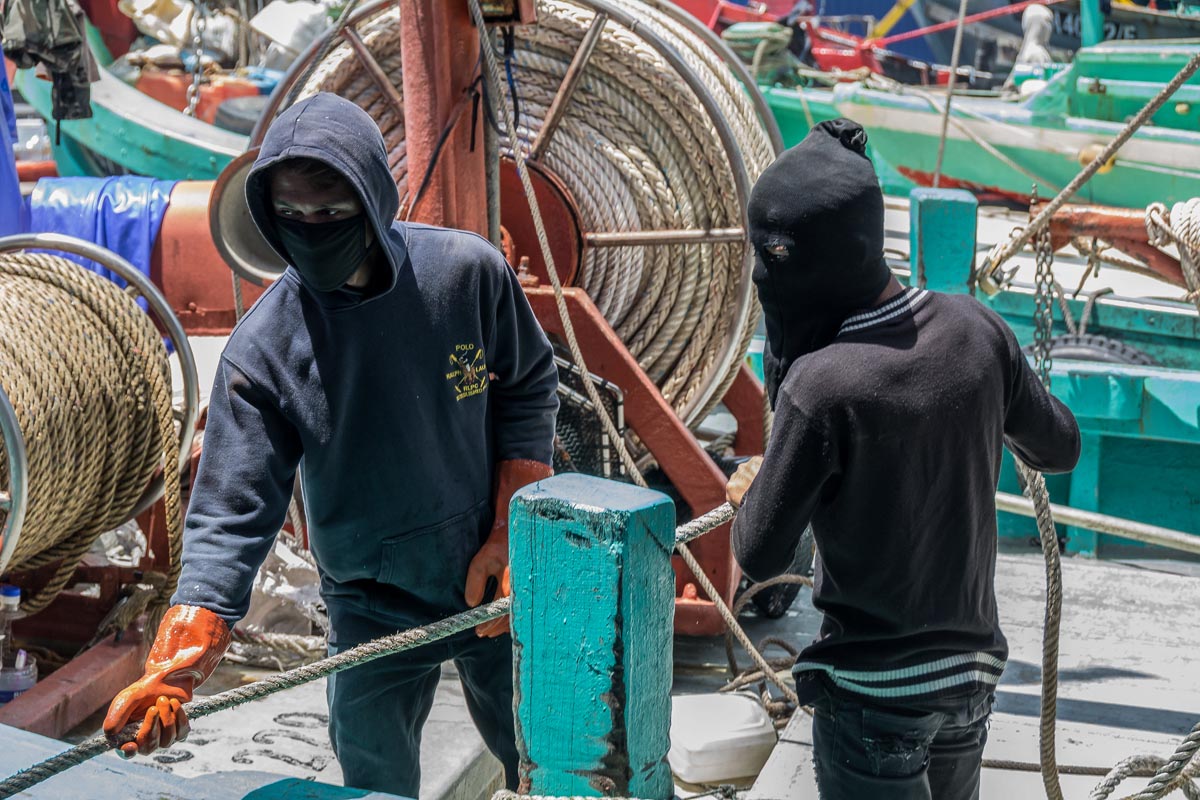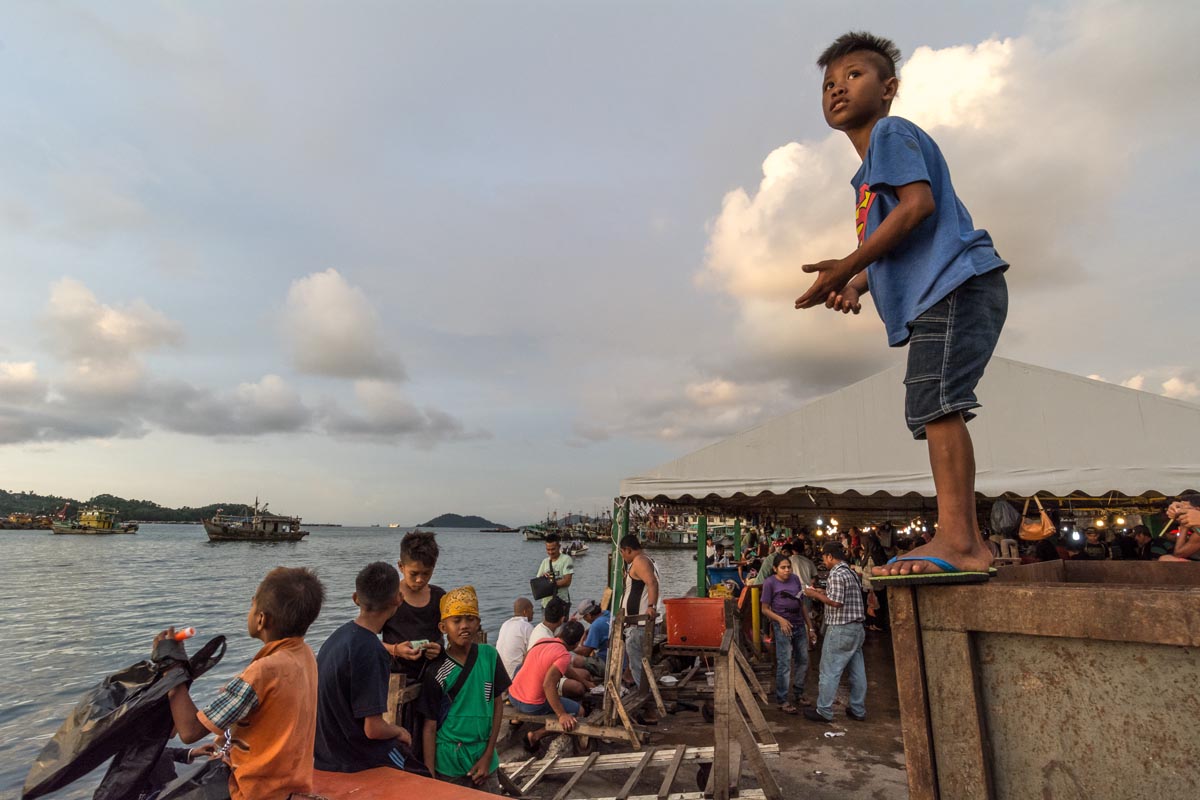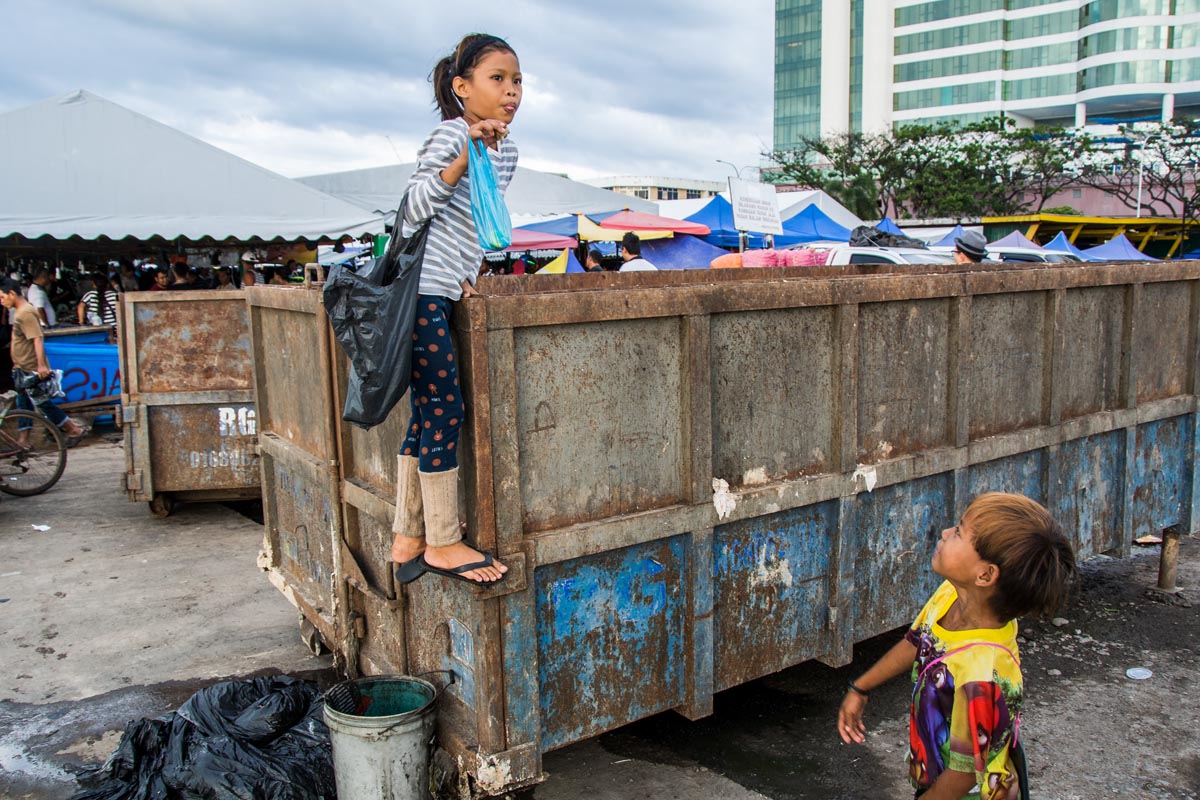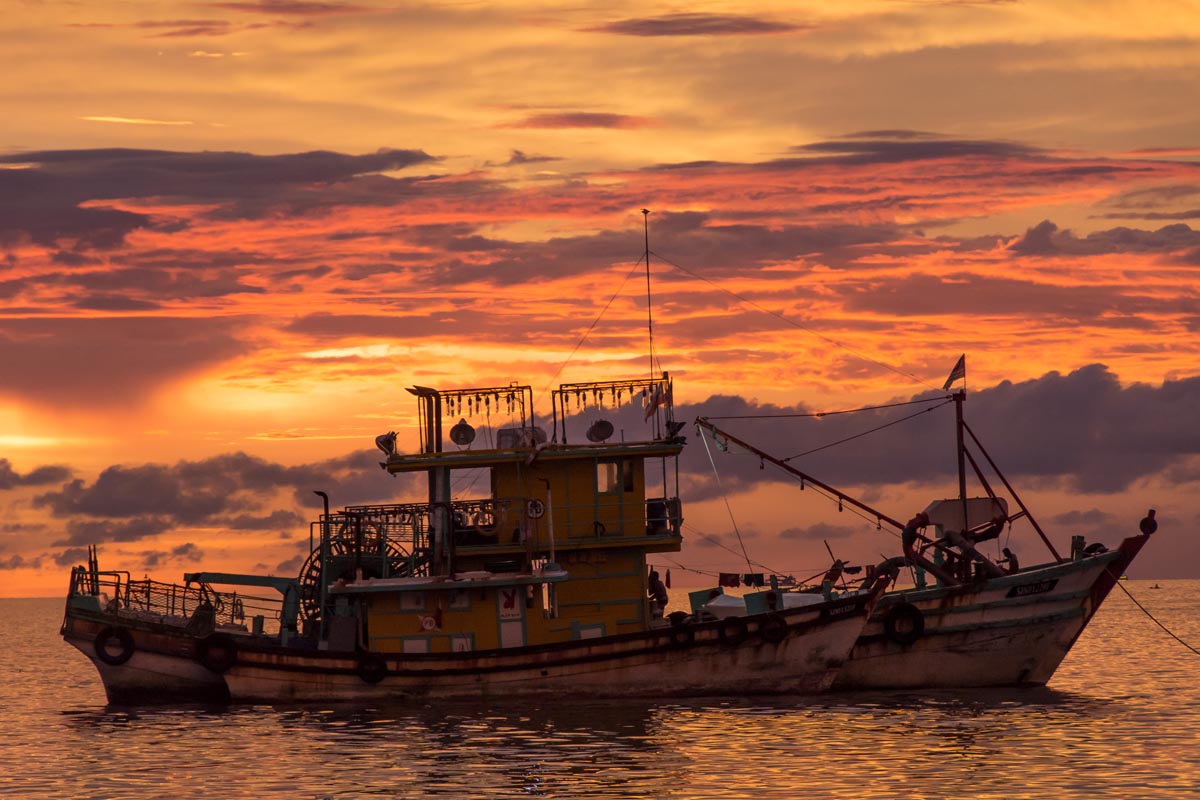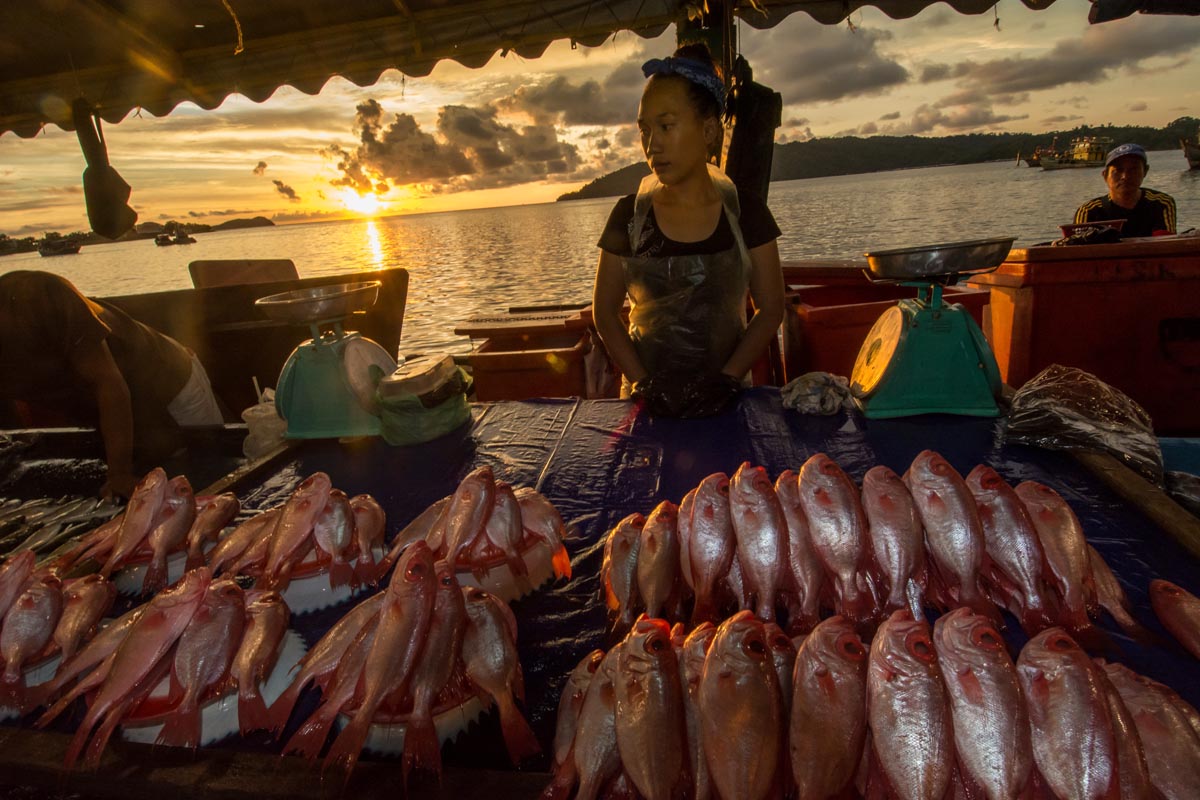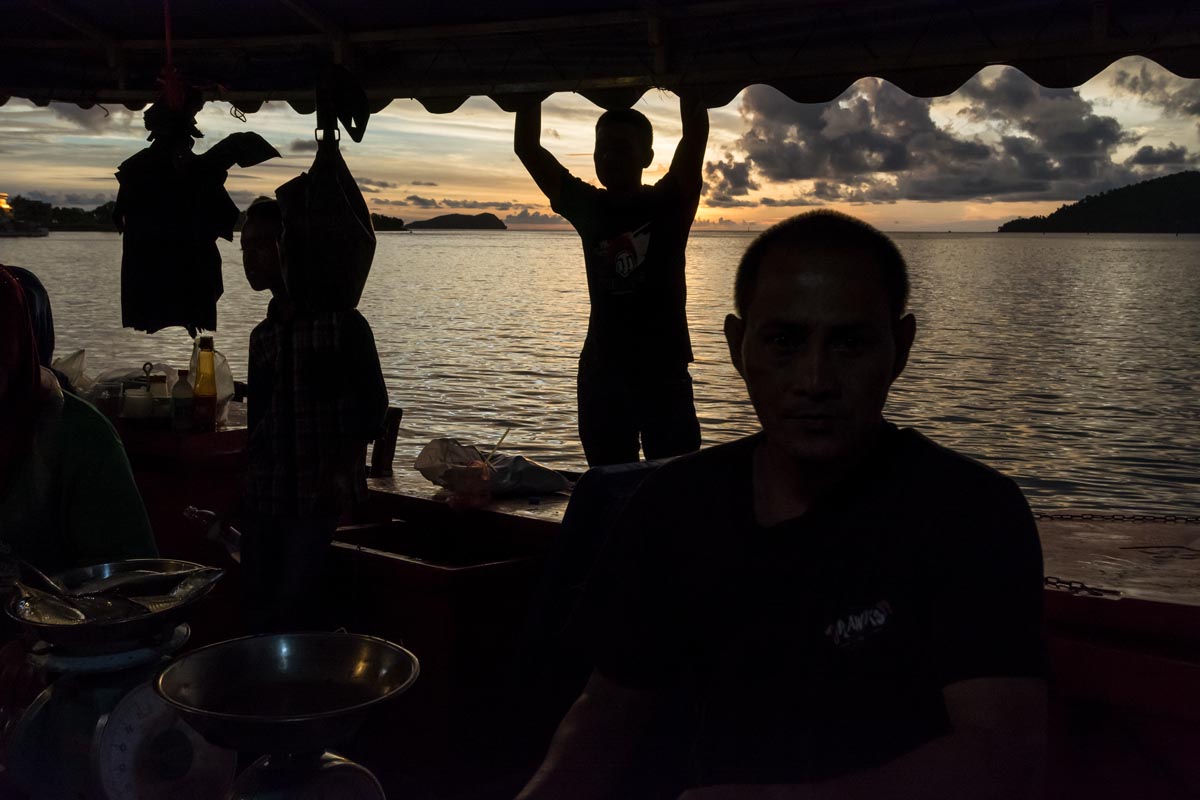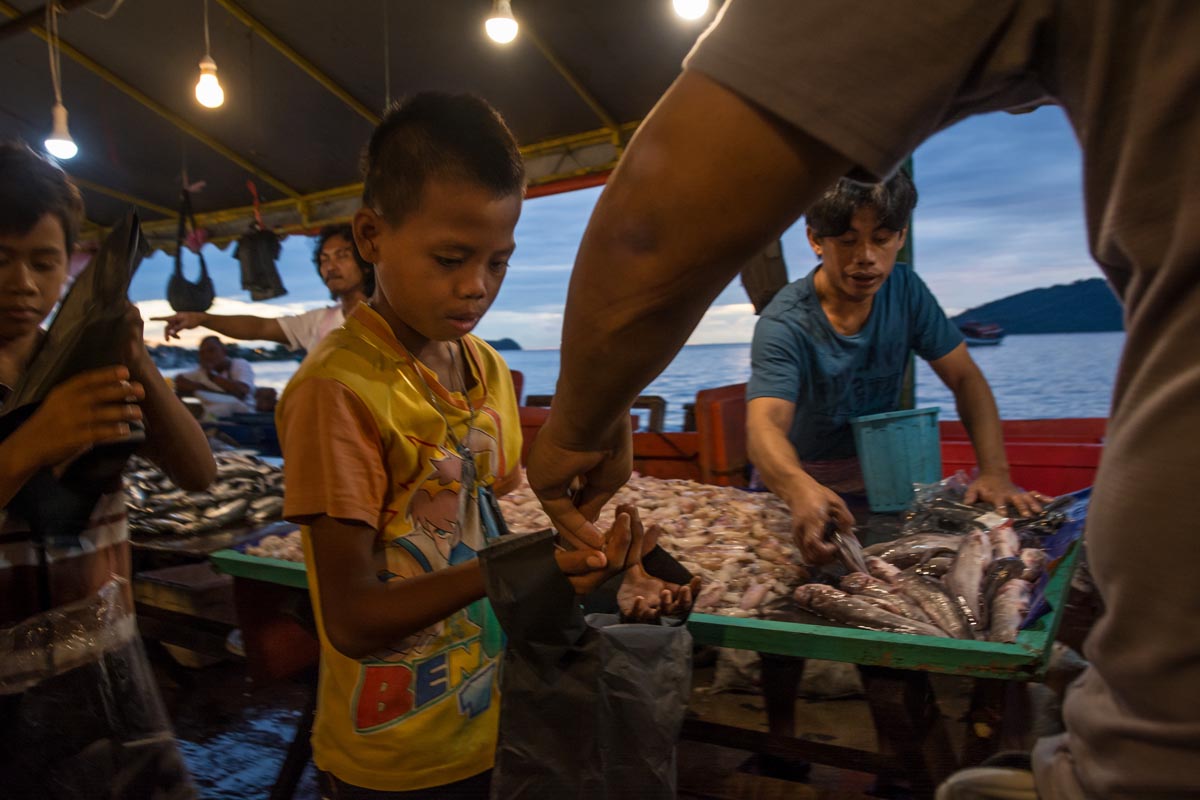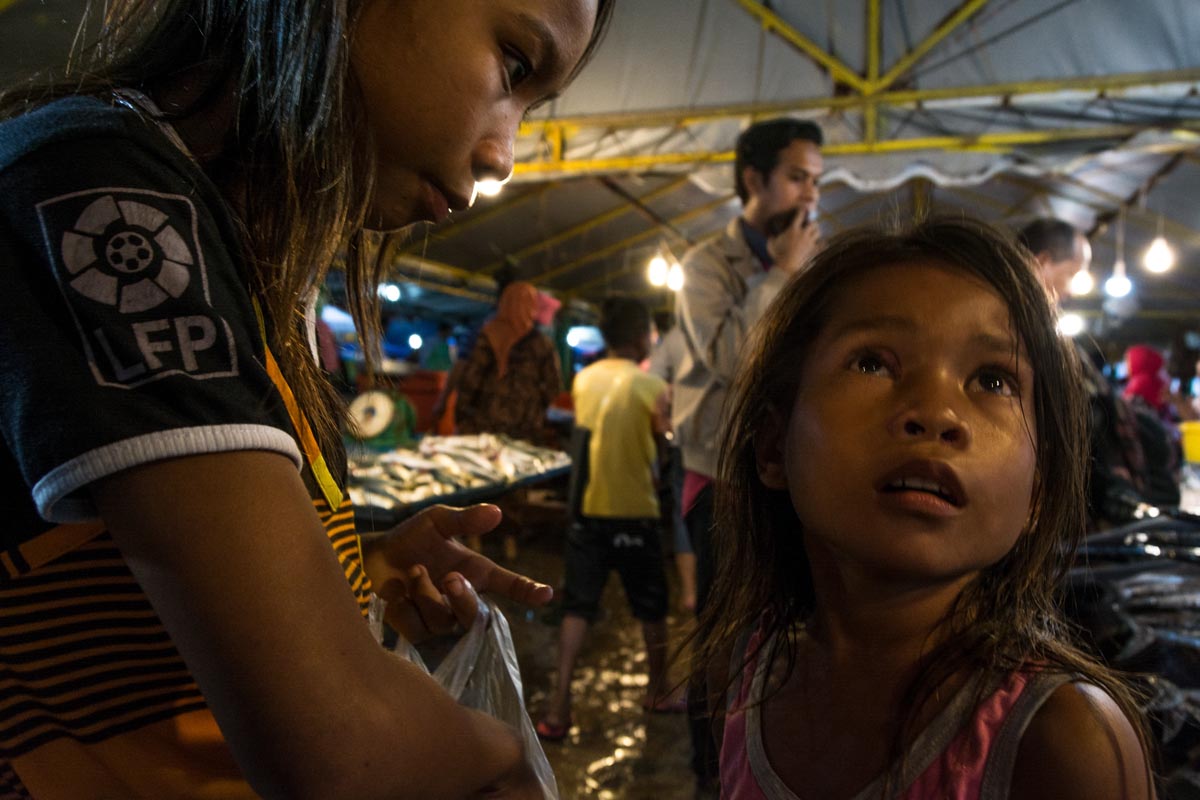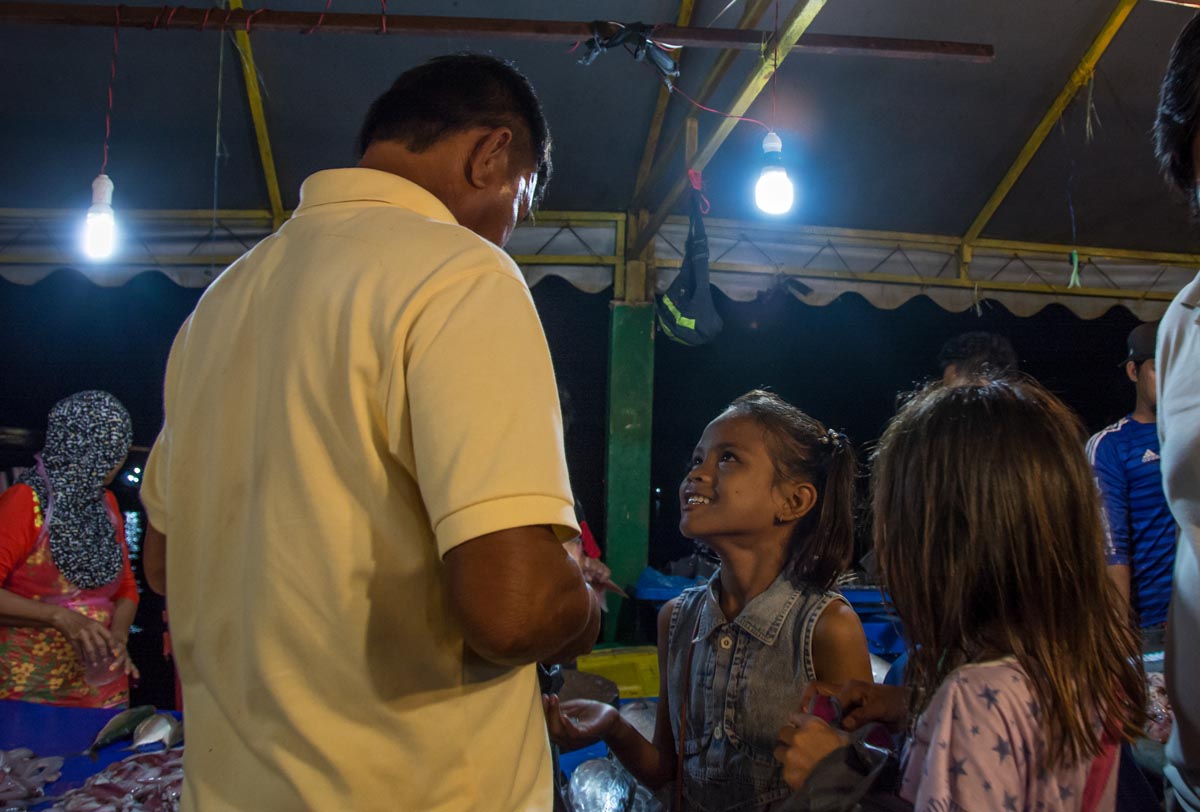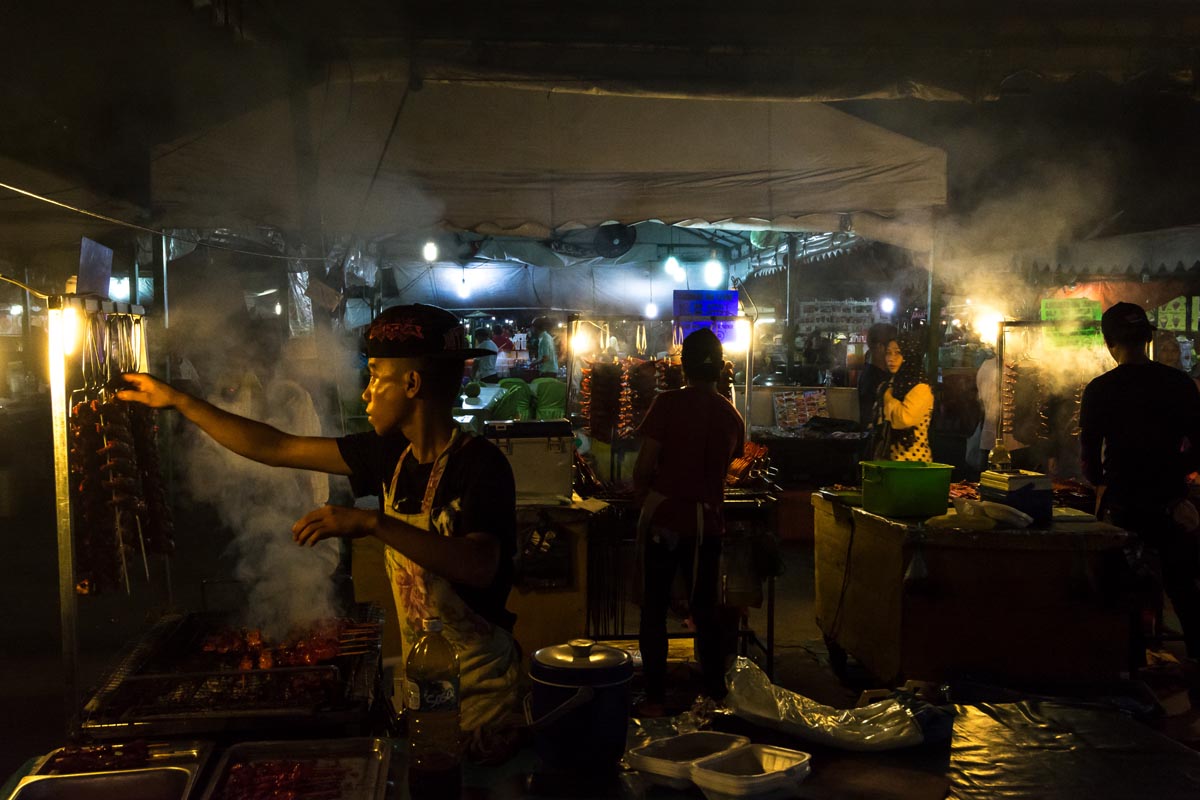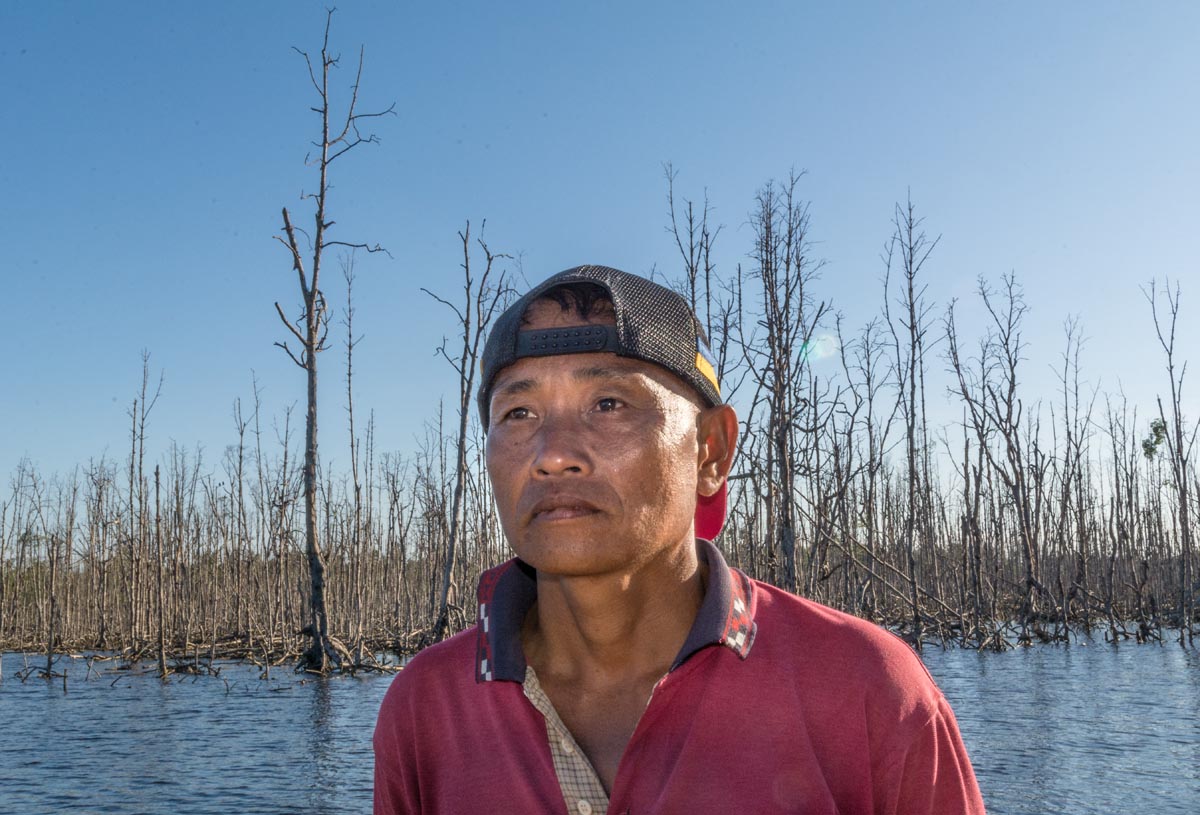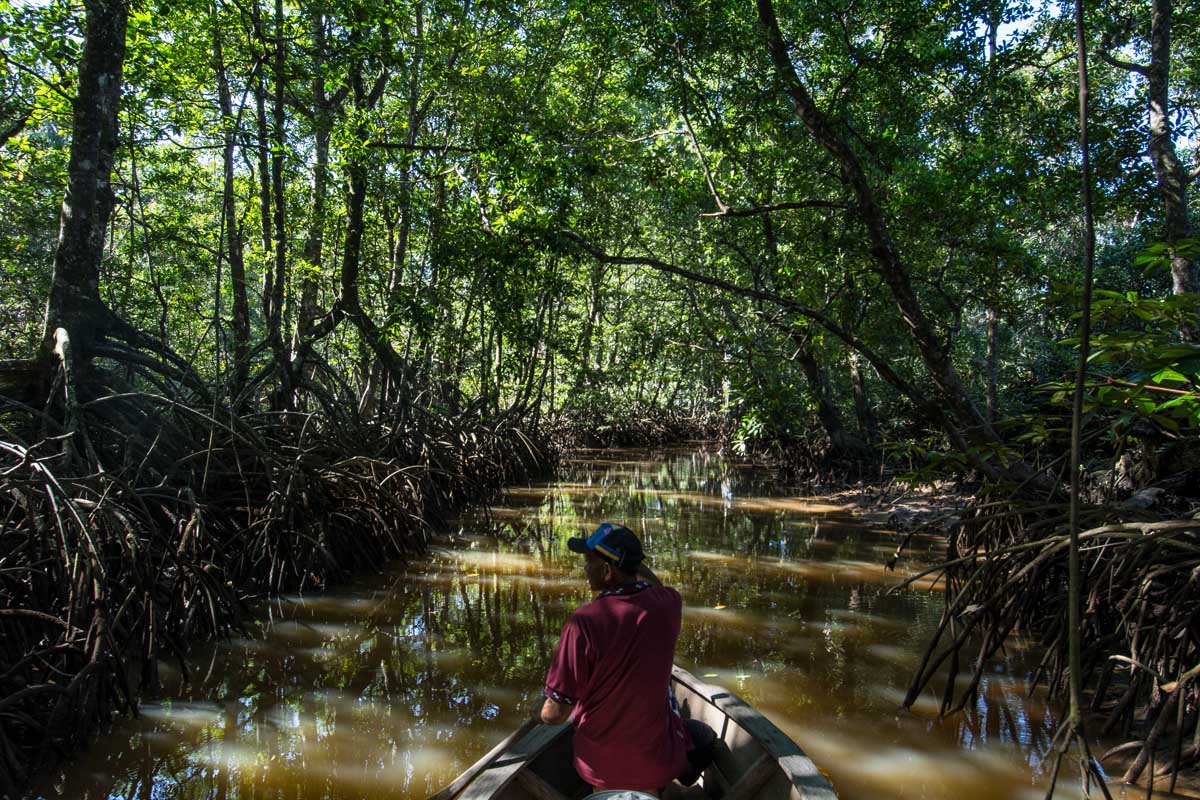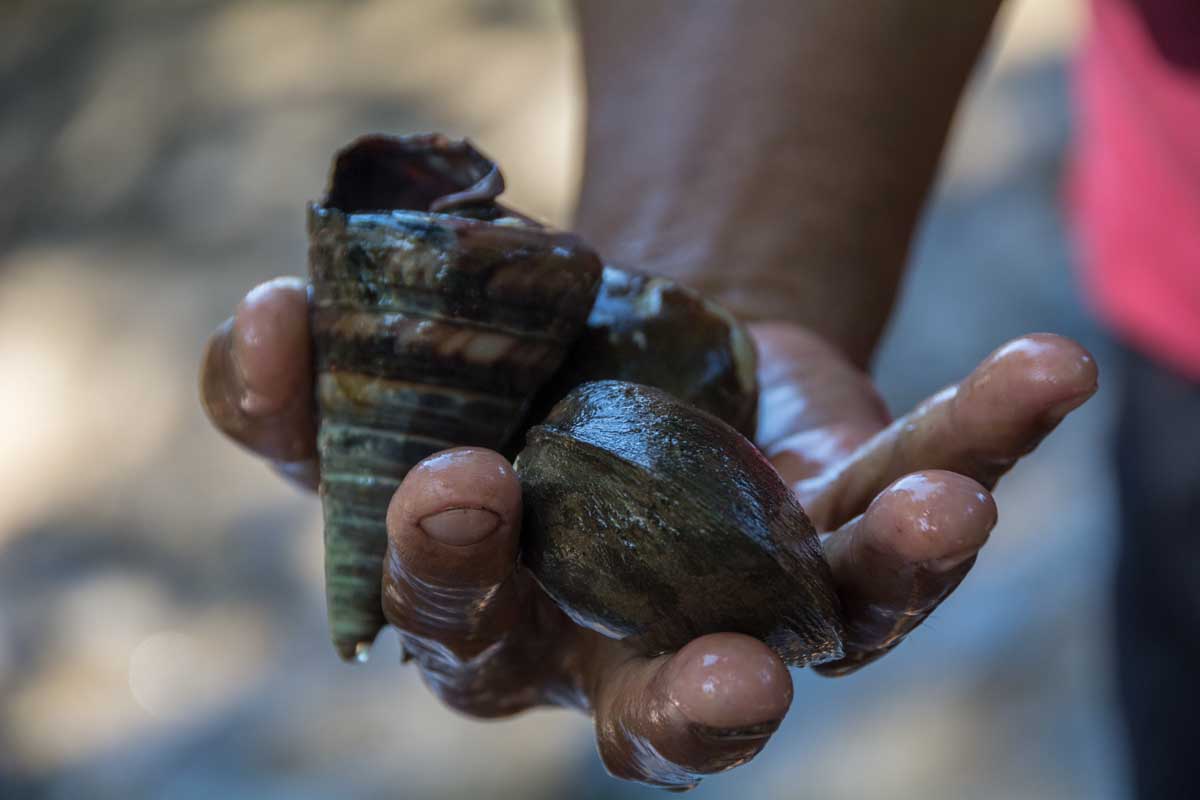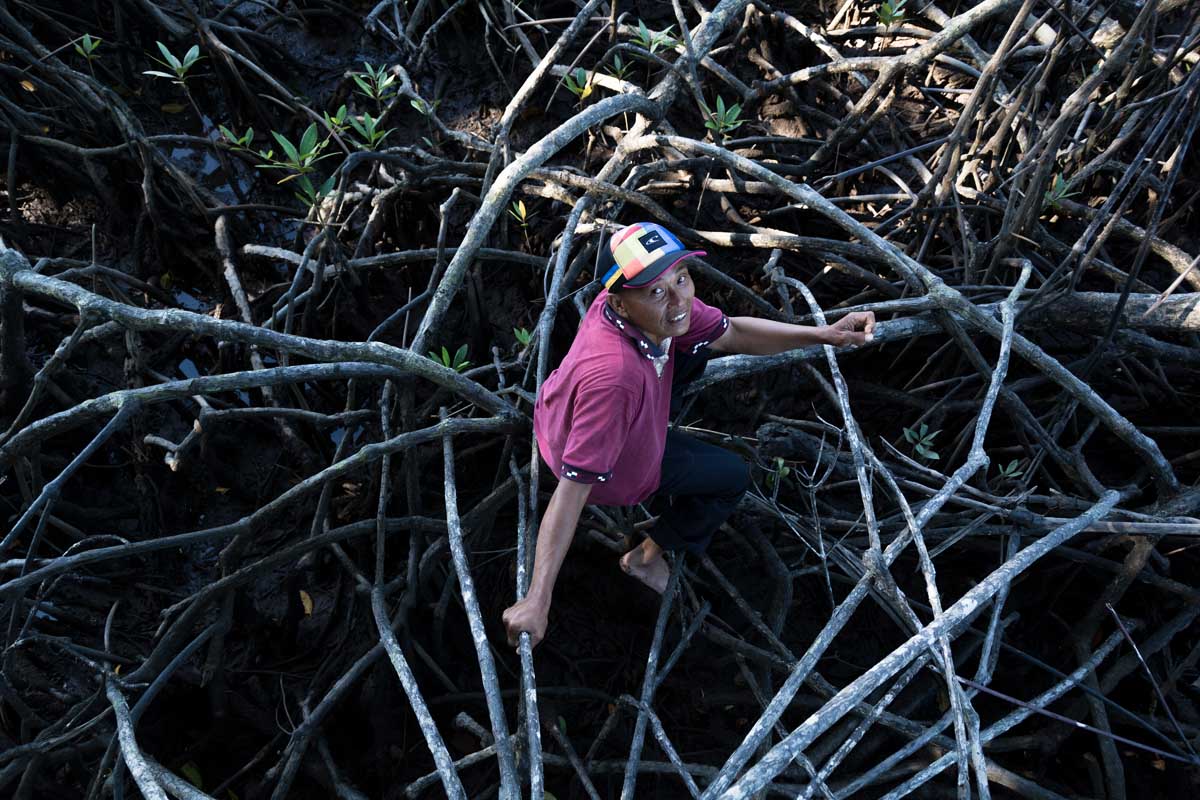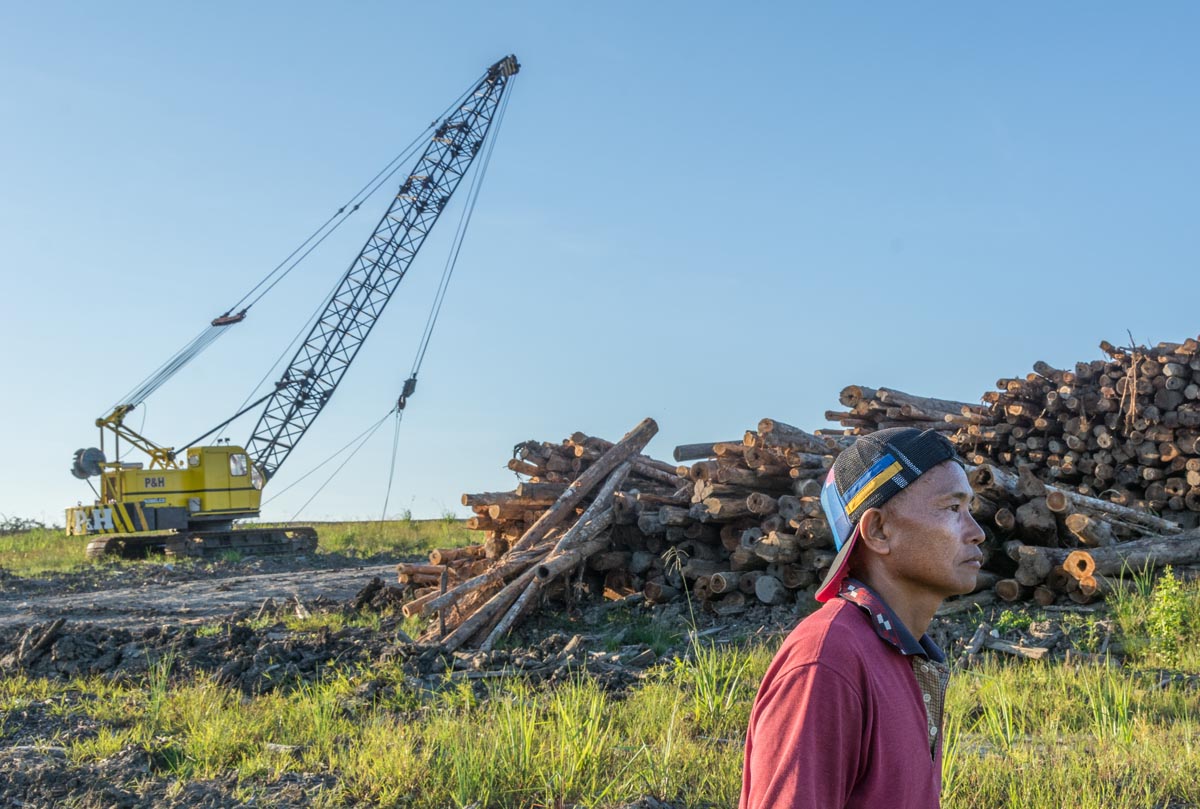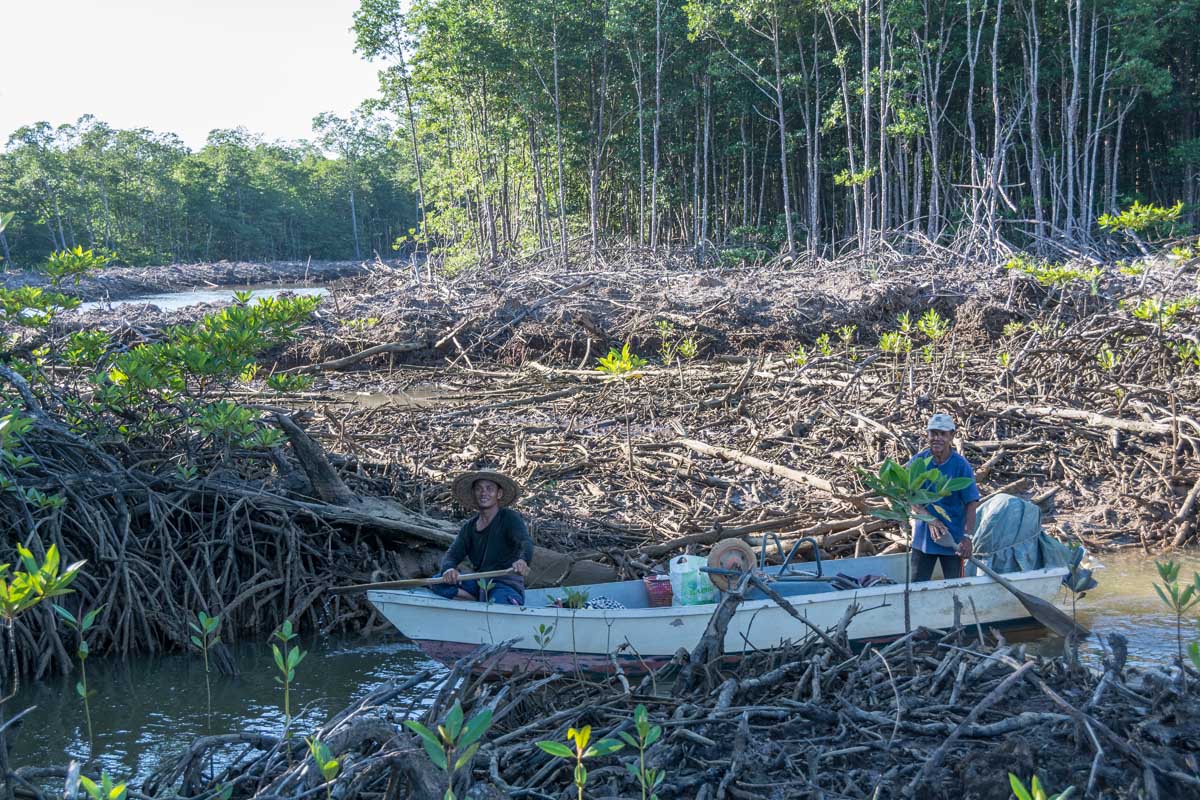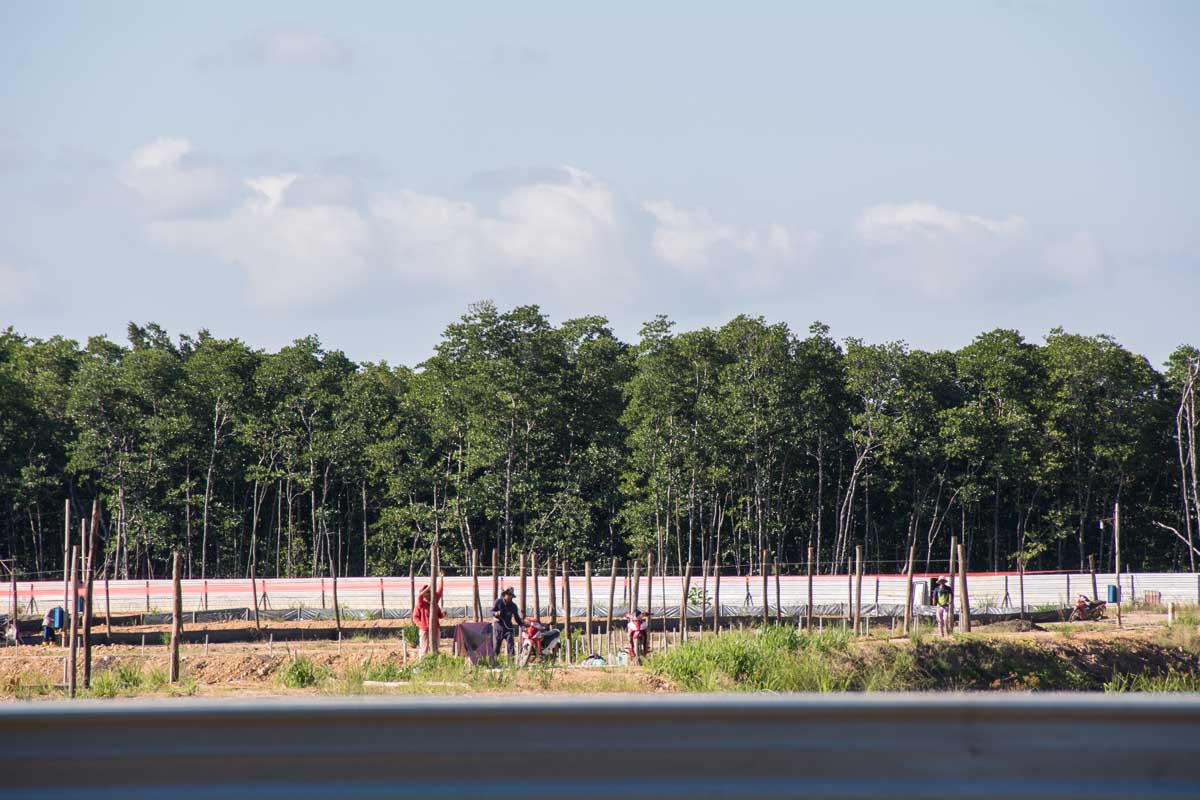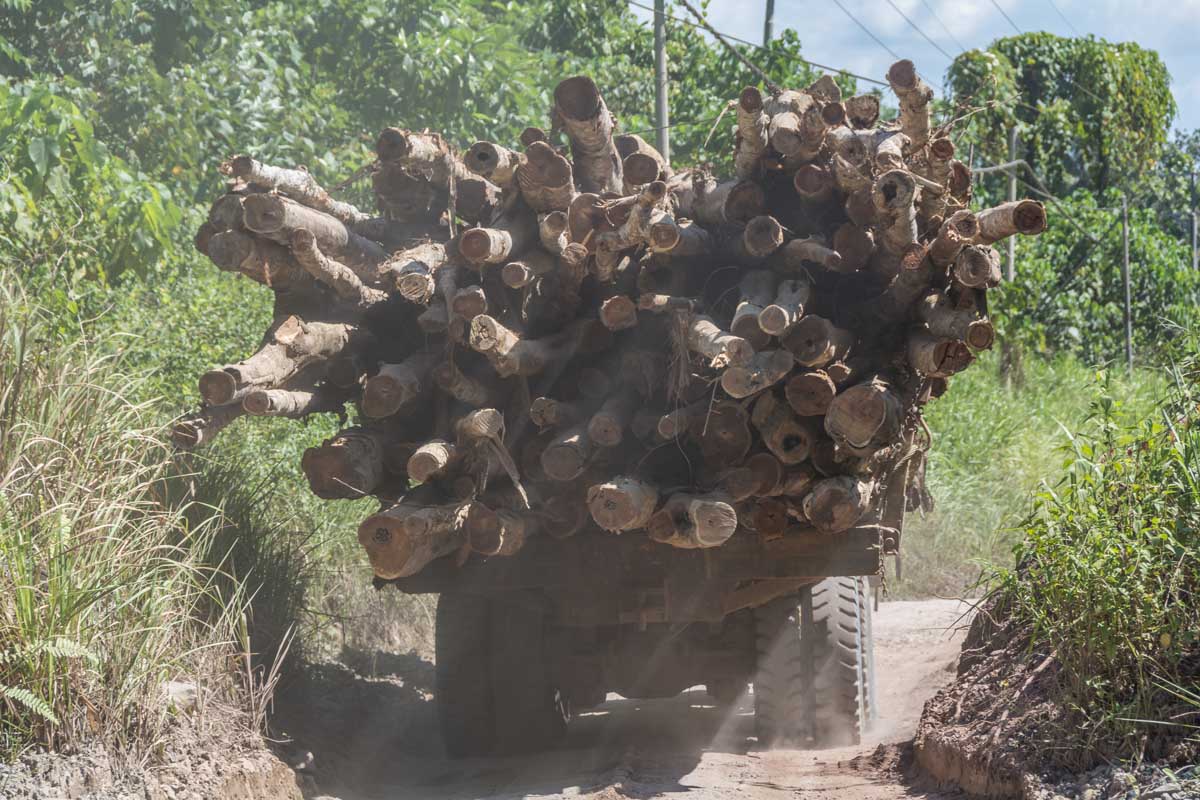Thousands of undocumented immigrants live in Sabah, East Malaysia on Borneo Island. Some have lived there for many years and have families. Not eligible for official documentation they are stateless people. Lacking official recognition, children cannot attend state school and many end up with no education working in menial jobs. Others are exploited by traffickers. Many are Bajau sea-gypsies, others are immigrants from the Muslim Sulu area of Southern Philippines. Indonesian workers also come across the porous border from Kalimantan seeking work.
Many of the Bajau Laut sea gypsies have now settled in Sabah. Climate change, overfishing and poverty have caused them to give up their nomadic life on the sea in favour of the shanty towns of coastal Sabah. The presence of migrants has been tolerated because many are contributing work in the state. However in recent years a rise in Muslim terrorist activity at tourist resorts around the coast has made the government less tolerant towards the migrants and less inclined to provide residency papers. So these shanty communities remain in limbo, trapped in an insecure situation where they cannot progress.
This story follows children from the shanty villages of Gaya Island, offshore from capital Kota Kinabalu, as they fight, play and hustle for a living in the capital’s busy fish docks and markets.
-
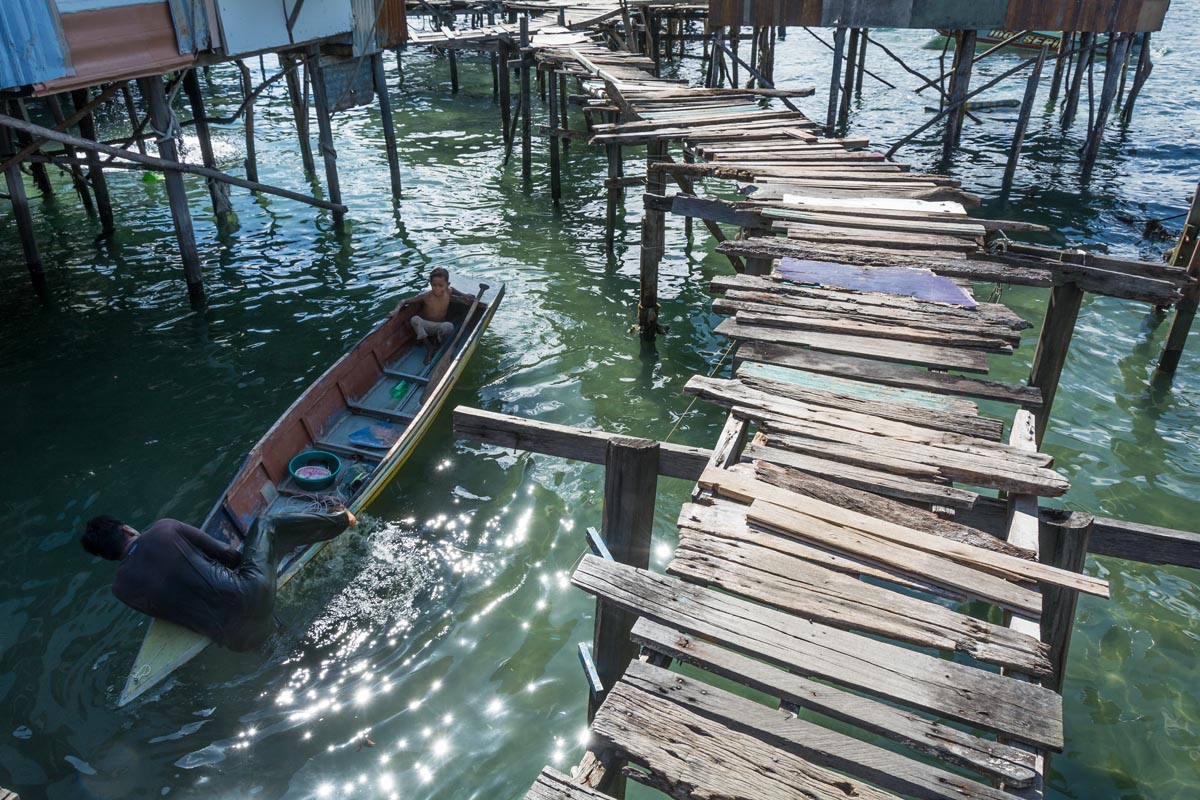 A boatman climbs into his boat beneath a shanty village built over the water offshore from Gaya island. Thousands of undocumented immigrants live in Sabah, East Malaysia on Borneo Island. Some of them have lived there for many years and have children. Not eligible for official documentation they are stateless...
A boatman climbs into his boat beneath a shanty village built over the water offshore from Gaya island. Thousands of undocumented immigrants live in Sabah, East Malaysia on Borneo Island. Some of them have lived there for many years and have children. Not eligible for official documentation they are stateless... -
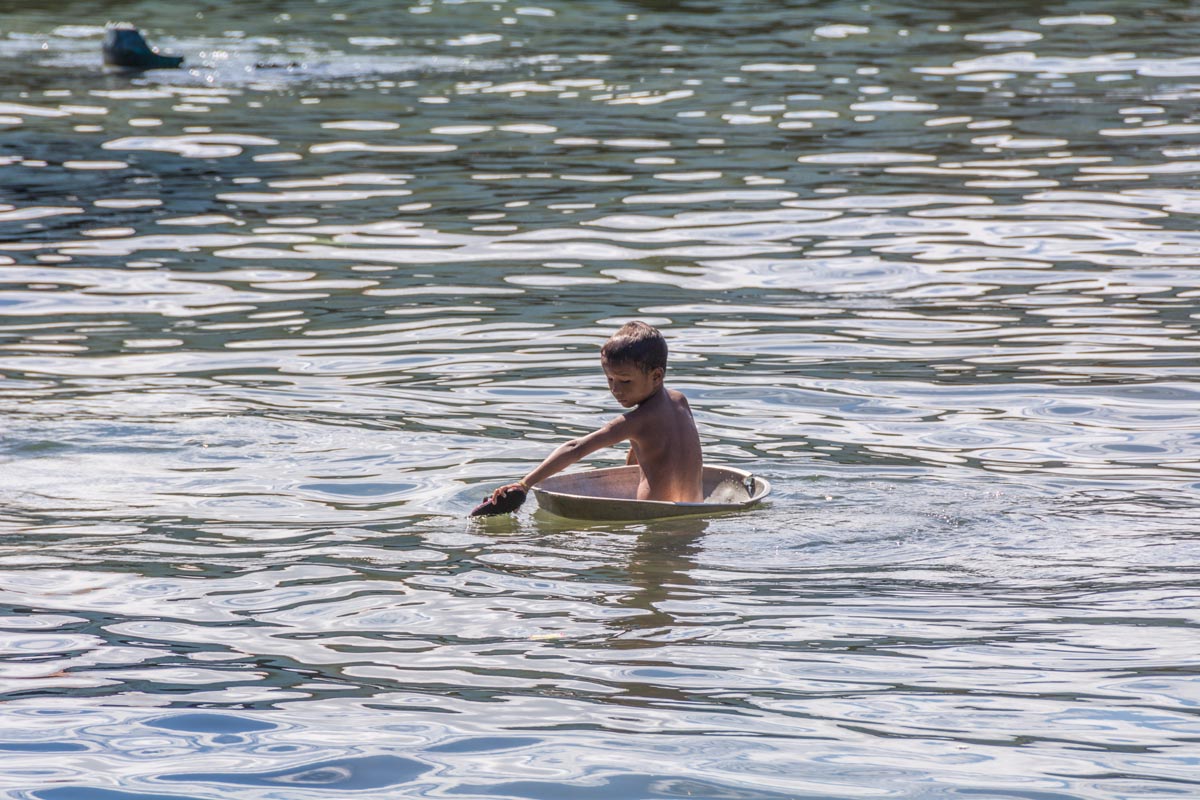 A boy paddles using his shoes in an upturned aluminium washing-up bowl he is using as a boat offshore from Gaya Isand, Sabah, East-Malaysia. He is one of thousands of stateless people on Gaya island, mainly from the Bajau Laut community of sea-gypsies and immigrants from the Sulu area of...
A boy paddles using his shoes in an upturned aluminium washing-up bowl he is using as a boat offshore from Gaya Isand, Sabah, East-Malaysia. He is one of thousands of stateless people on Gaya island, mainly from the Bajau Laut community of sea-gypsies and immigrants from the Sulu area of... -
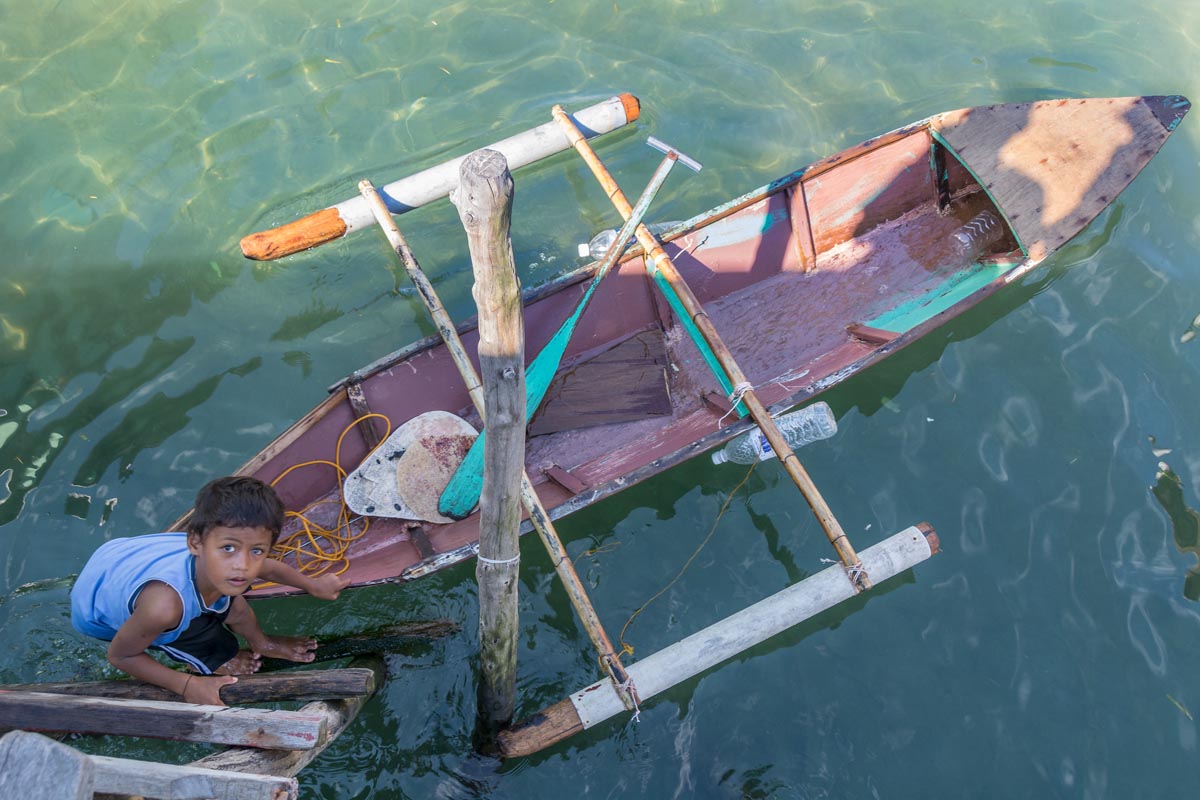 Thousands of undocumented immigrants live in Sabah, East Malaysia on Borneo Island. Some of them have lived there for many years and have children. Not eligible for official documentation they are stateless people. Lacking official recognition, children cannot attend state school and many end up with no education working in...
Thousands of undocumented immigrants live in Sabah, East Malaysia on Borneo Island. Some of them have lived there for many years and have children. Not eligible for official documentation they are stateless people. Lacking official recognition, children cannot attend state school and many end up with no education working in... -
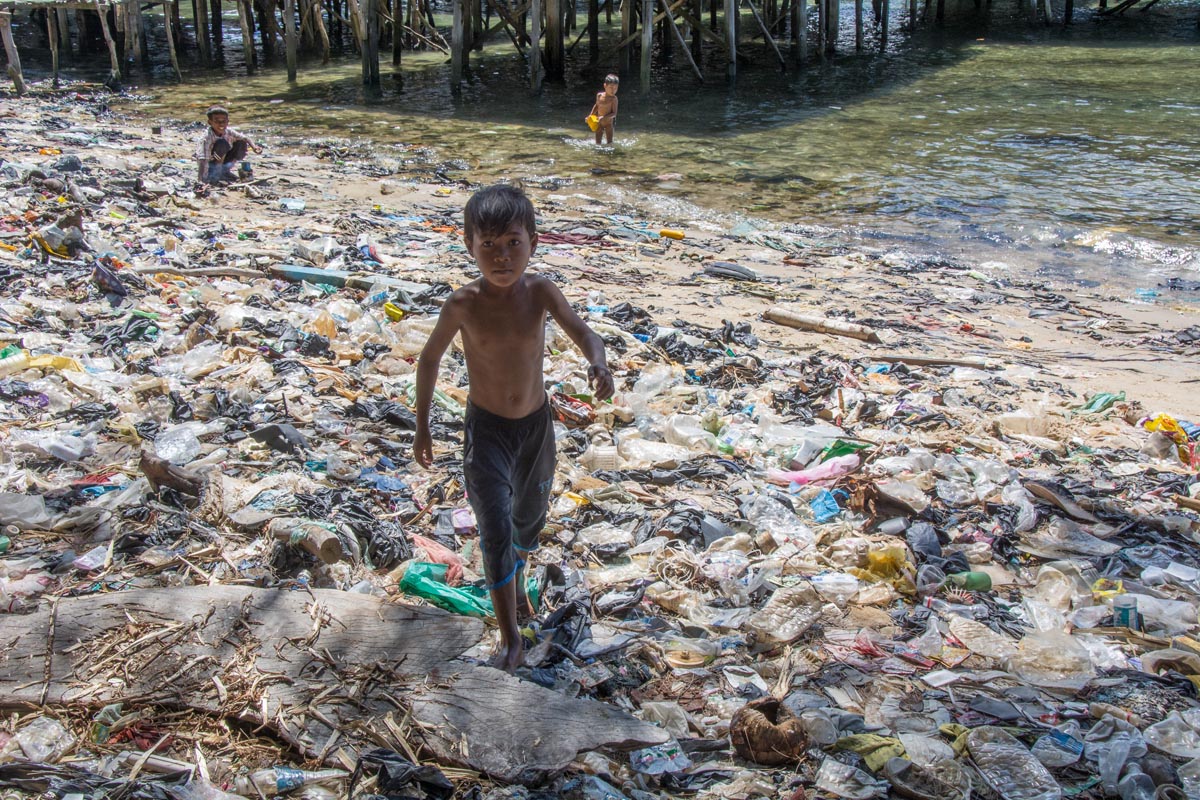 A boy walks through discarded garbage covering the beach at his shanty village of houses on stilts roughly built over the water on Gaya Island, offshore from the State capital of Kota Kinabalu, Sabah, East Malaysia. Like thousands of others, he has no formal immigration status and is considered ‘stateless’....
A boy walks through discarded garbage covering the beach at his shanty village of houses on stilts roughly built over the water on Gaya Island, offshore from the State capital of Kota Kinabalu, Sabah, East Malaysia. Like thousands of others, he has no formal immigration status and is considered ‘stateless’.... -
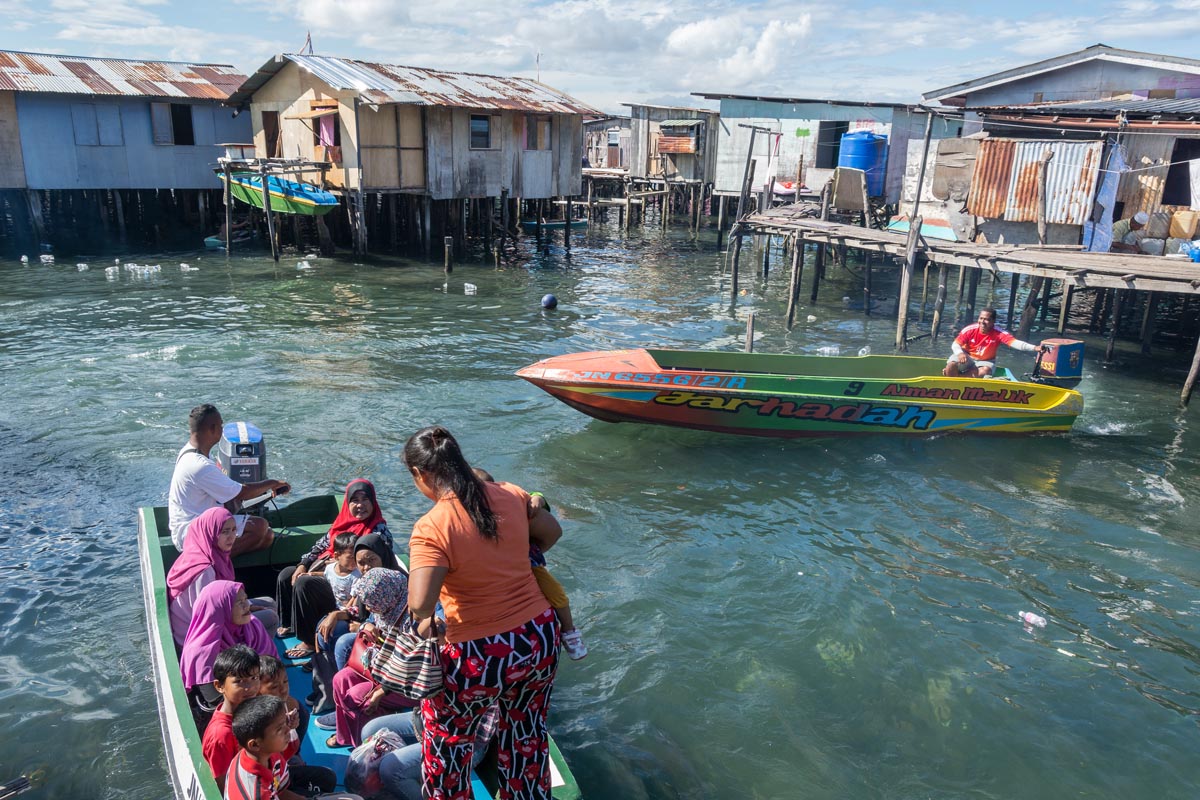 Thousands of undocumented immigrants live in Sabah, East Malaysia on Borneo Island. Some of them have lived there for many years and have children. Not eligible for official documentation they are stateless people. Lacking official recognition, children cannot attend state school and many end up with no education working in...
Thousands of undocumented immigrants live in Sabah, East Malaysia on Borneo Island. Some of them have lived there for many years and have children. Not eligible for official documentation they are stateless people. Lacking official recognition, children cannot attend state school and many end up with no education working in... -
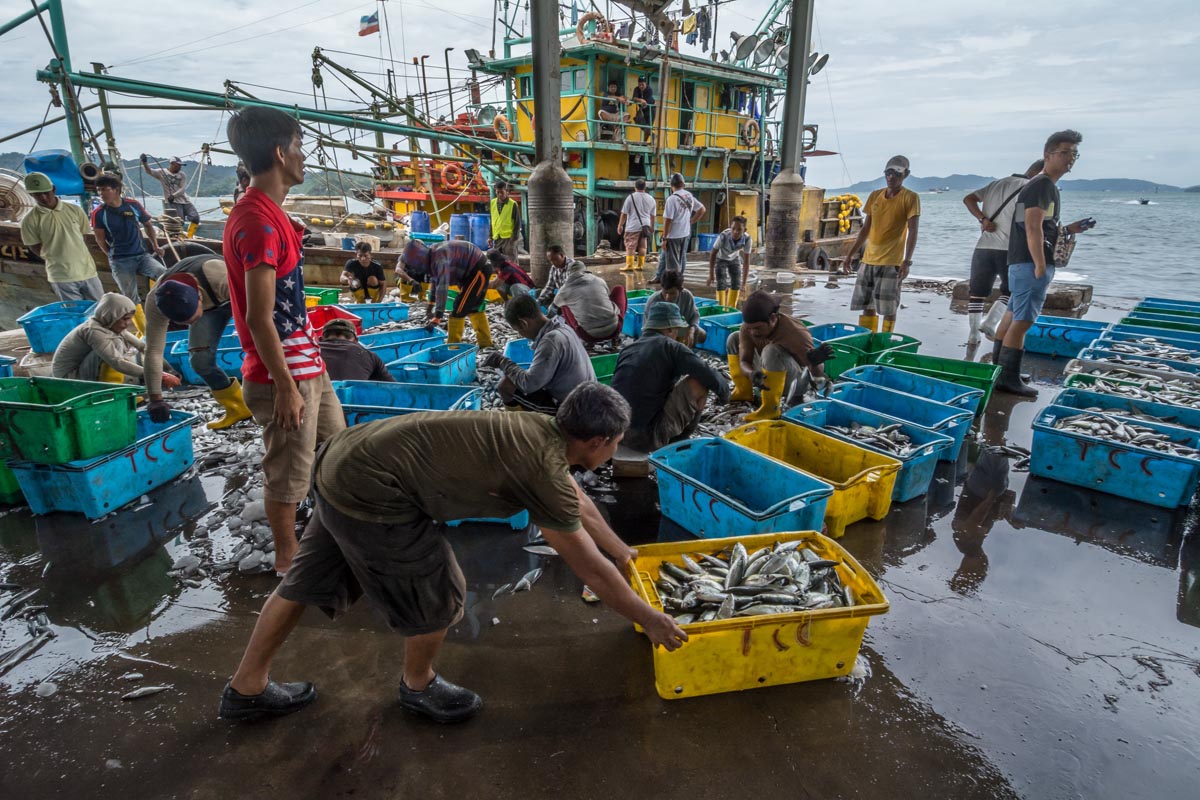 The Filipino fish docks in Kota Kinabalu are a hive of activity where fish are landed from Filipino trawlers, many of which have been out to sea for weeks at a time. The fishermen are among thousands of undocumented immigrants living in Sabah, East Malaysia on Borneo Island. Some of...
The Filipino fish docks in Kota Kinabalu are a hive of activity where fish are landed from Filipino trawlers, many of which have been out to sea for weeks at a time. The fishermen are among thousands of undocumented immigrants living in Sabah, East Malaysia on Borneo Island. Some of... -
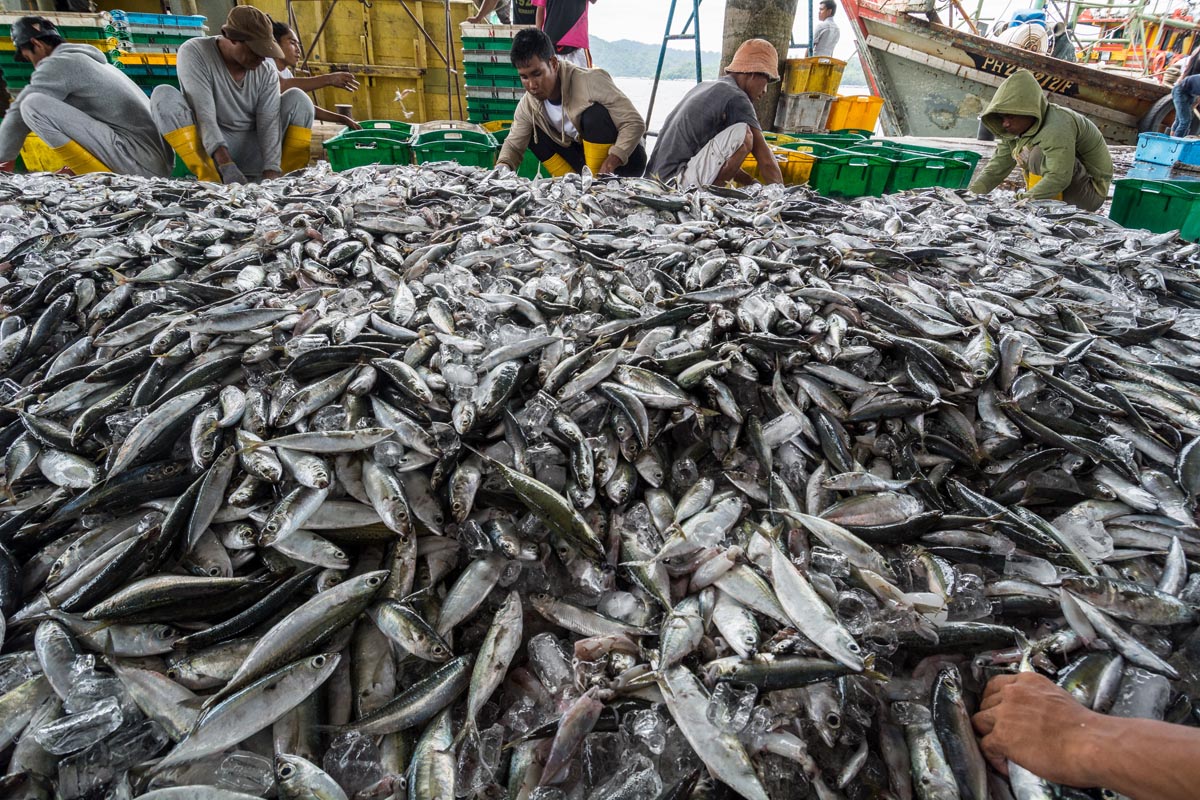 Fish cover the Filipino fish dock having been unloaded from the hold of a trawler. The trawler had been at sea for 30 days. The different species of fish are separated into boxes, labelled, weighed and loaded onto vehicles for distribution from Kota Kinabalu the capital of Sabah, East Malaysia.
Fish cover the Filipino fish dock having been unloaded from the hold of a trawler. The trawler had been at sea for 30 days. The different species of fish are separated into boxes, labelled, weighed and loaded onto vehicles for distribution from Kota Kinabalu the capital of Sabah, East Malaysia. -
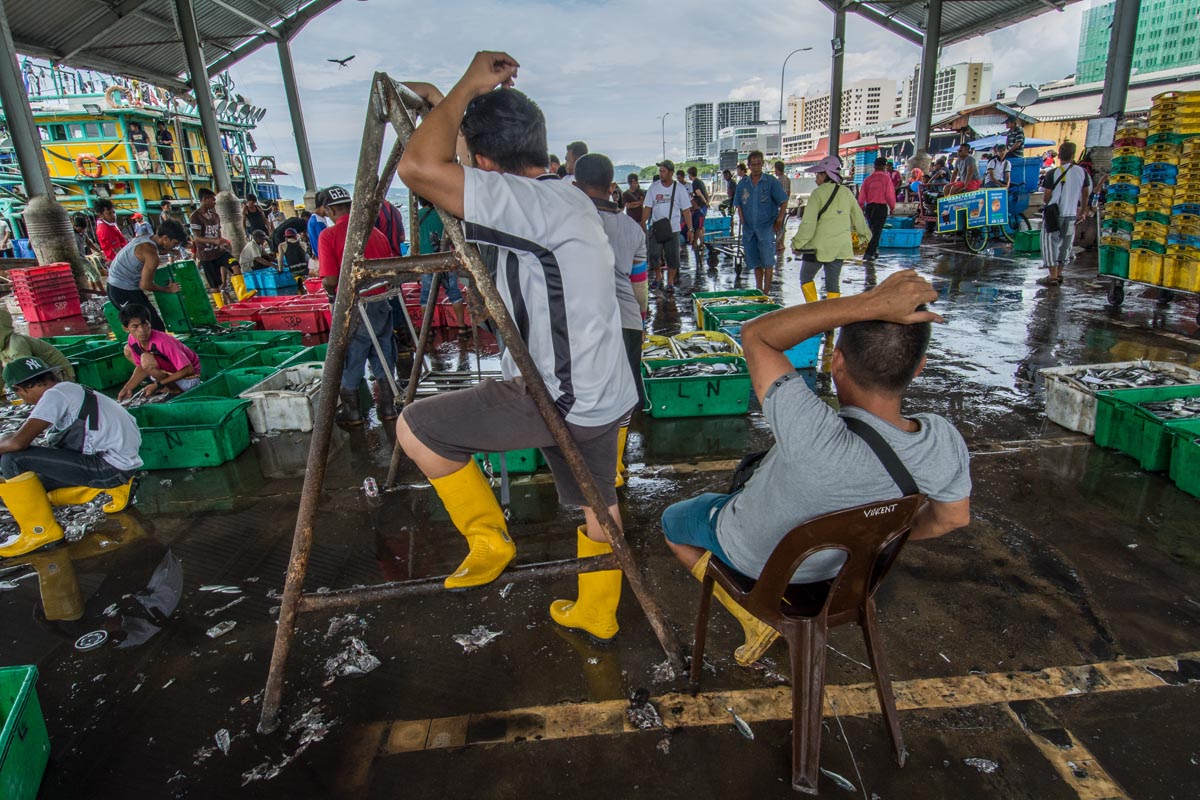 The Filipino fish docks in Kota Kinabalu are a hive of activity where fish are landed from Filipino trawlers, many of which have been out to sea for weeks at a time. The fishermen are among thousands of undocumented immigrants living in Sabah, East Malaysia on Borneo Island. Some of...
The Filipino fish docks in Kota Kinabalu are a hive of activity where fish are landed from Filipino trawlers, many of which have been out to sea for weeks at a time. The fishermen are among thousands of undocumented immigrants living in Sabah, East Malaysia on Borneo Island. Some of... -
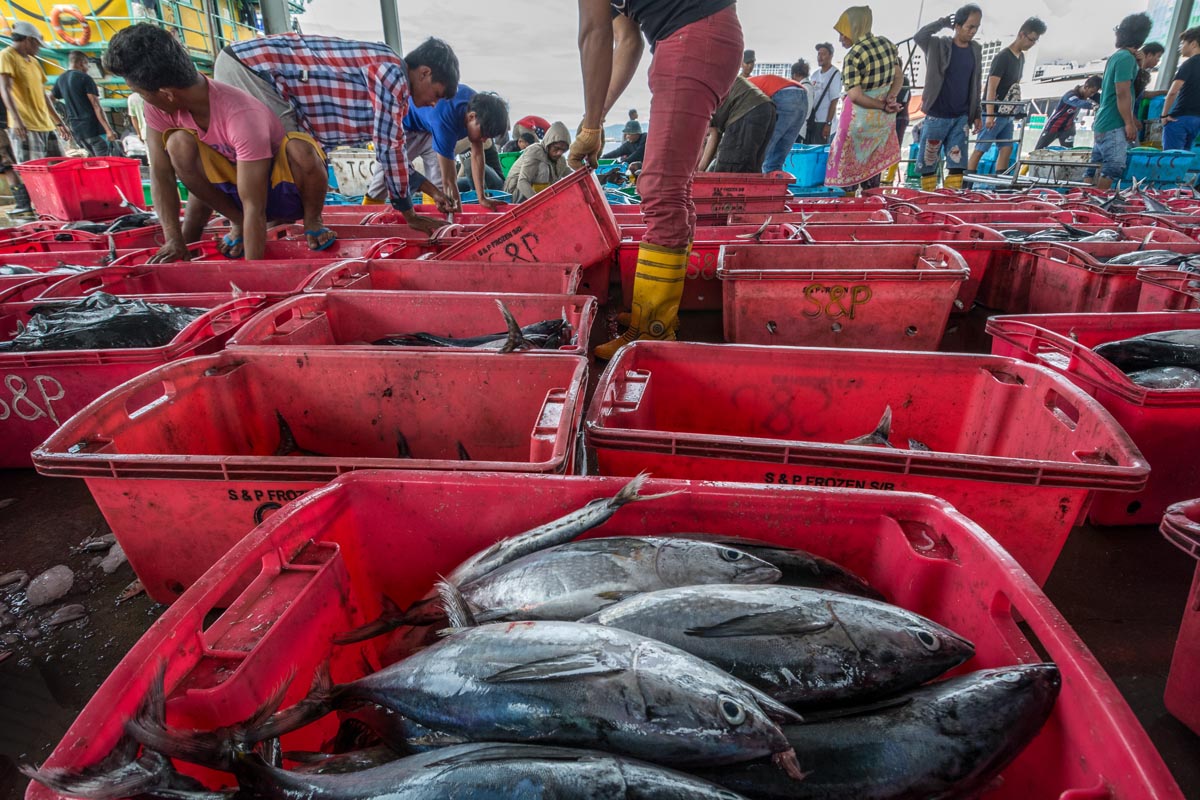 The Filipino fish docks in Kota Kinabalu are a hive of activity where fish are landed from Filipino trawlers, many of which have been out to sea for weeks at a time. The fishermen are among thousands of undocumented immigrants living in Sabah, East Malaysia on Borneo Island. Some of...
The Filipino fish docks in Kota Kinabalu are a hive of activity where fish are landed from Filipino trawlers, many of which have been out to sea for weeks at a time. The fishermen are among thousands of undocumented immigrants living in Sabah, East Malaysia on Borneo Island. Some of... -
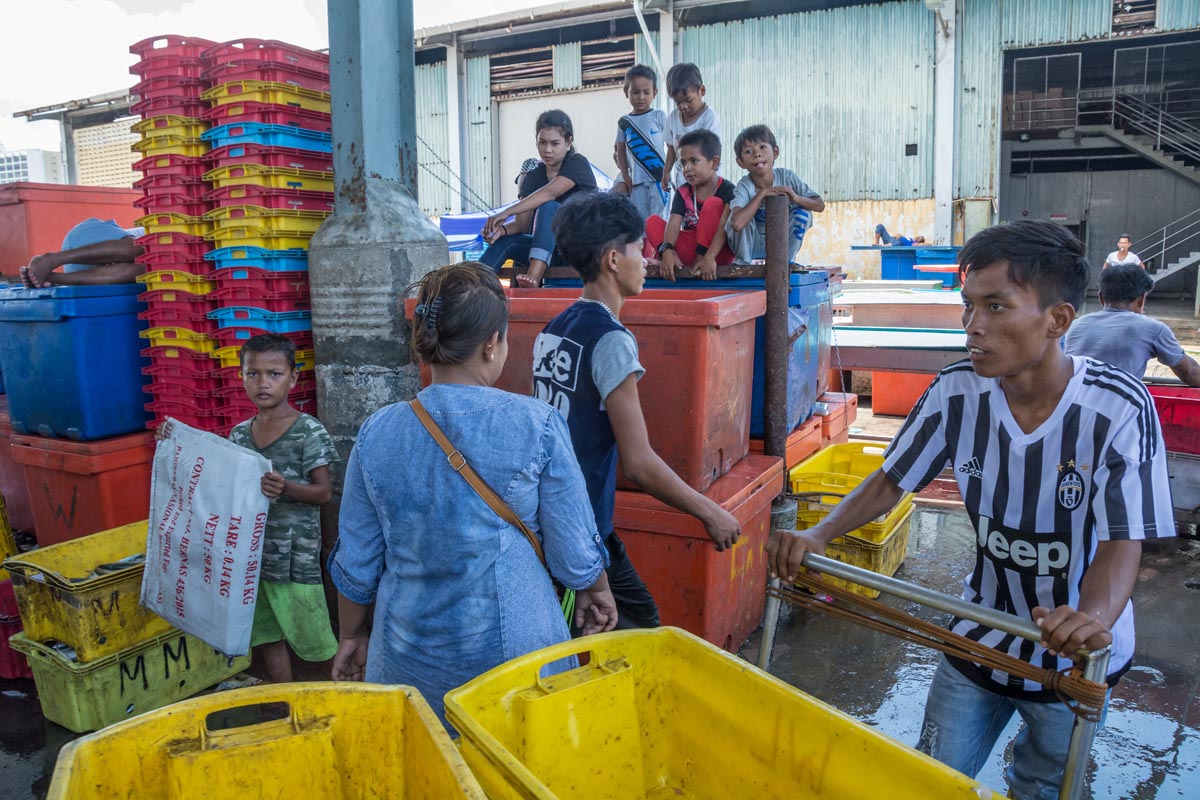 The Filipino fish docks in Kota Kinabalu are a hive of activity where fish are landed from Filipino trawlers, many of which have been out to sea for weeks at a time. The fishermen are among thousands of undocumented immigrants living in Sabah, East Malaysia on Borneo Island. Some of...
The Filipino fish docks in Kota Kinabalu are a hive of activity where fish are landed from Filipino trawlers, many of which have been out to sea for weeks at a time. The fishermen are among thousands of undocumented immigrants living in Sabah, East Malaysia on Borneo Island. Some of... -
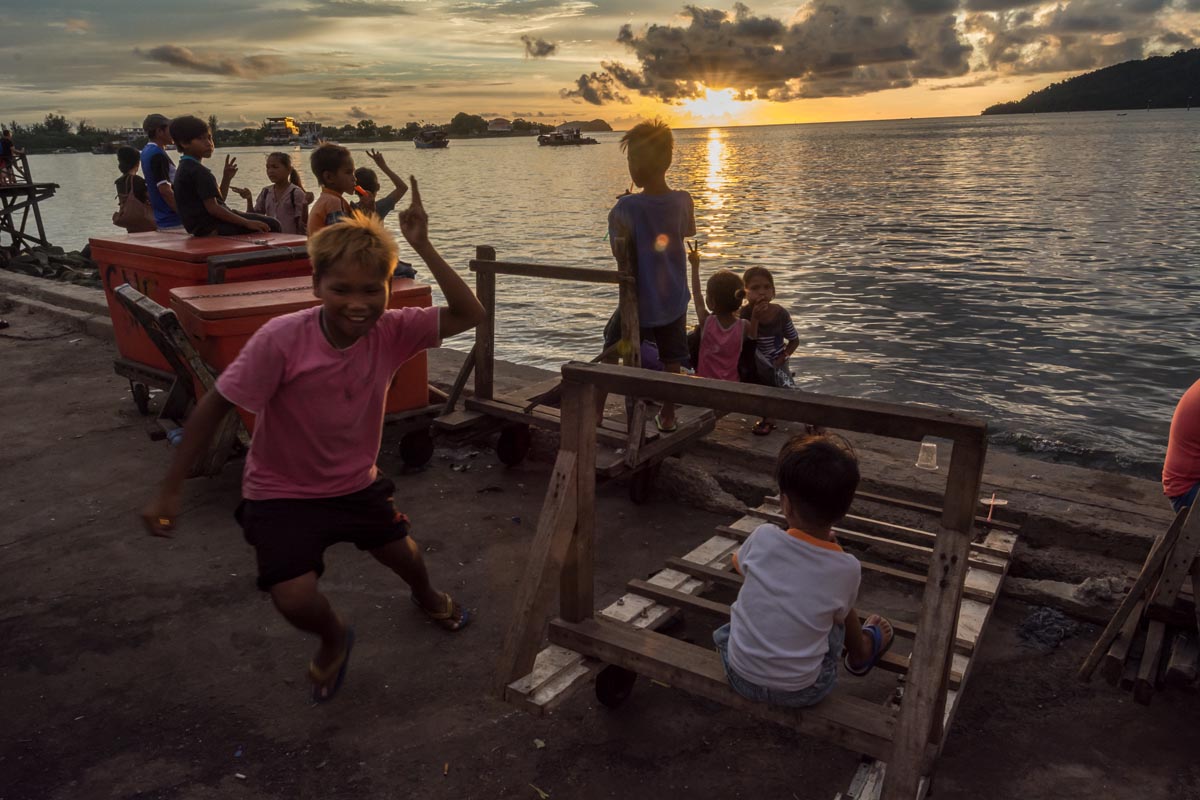 Stateless street children loiter around the Filipino market in Koto Kinabalu, getting up to mischief and searching for menial work as porters and bag carriers. Tens of thousands of undocumented immigrants live in Sabah, East Malaysia on Borneo Island. Some of them have lived there for many years with children...
Stateless street children loiter around the Filipino market in Koto Kinabalu, getting up to mischief and searching for menial work as porters and bag carriers. Tens of thousands of undocumented immigrants live in Sabah, East Malaysia on Borneo Island. Some of them have lived there for many years with children... -
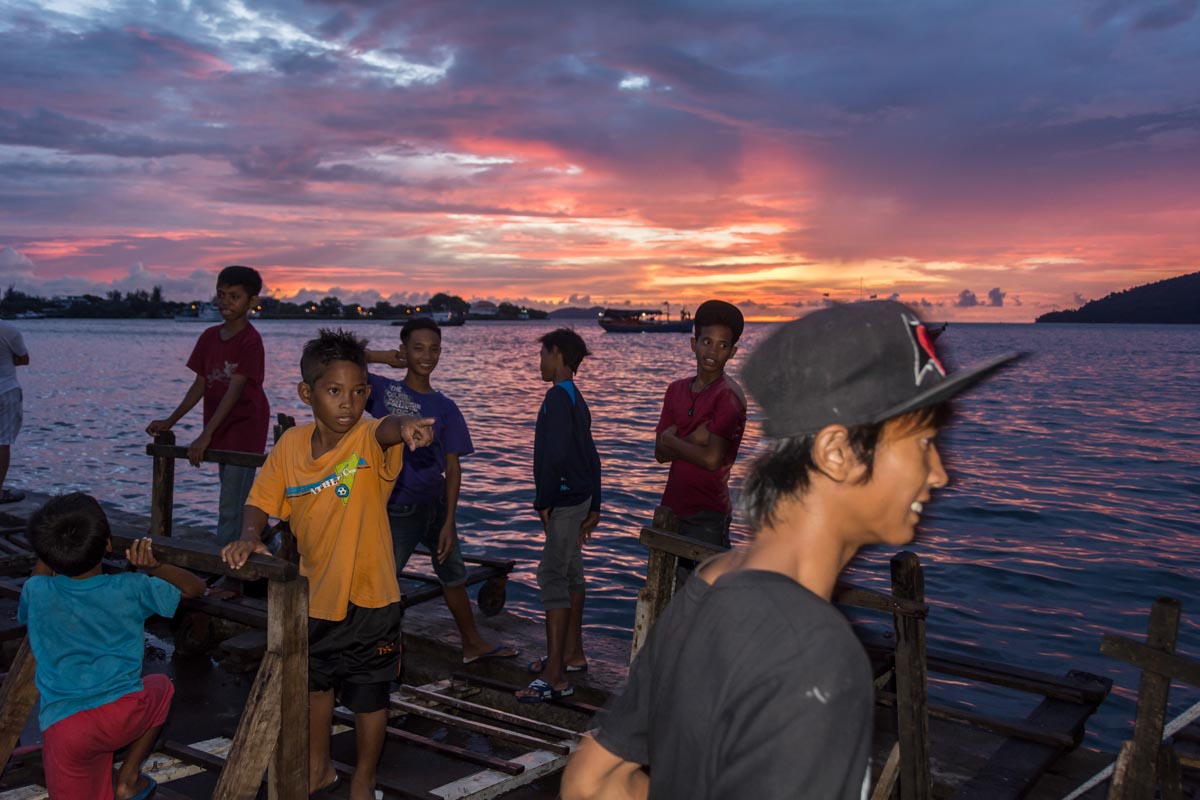 A boy points at another boy among a groups standing on porter trolleys and watching the sunset. Every evening ‘stateless’ children gather at the Filipino market in the town centre, where they work as porters because they are not eligible to join the state school education system. Kota Kinabalu, Sabah.
A boy points at another boy among a groups standing on porter trolleys and watching the sunset. Every evening ‘stateless’ children gather at the Filipino market in the town centre, where they work as porters because they are not eligible to join the state school education system. Kota Kinabalu, Sabah. -
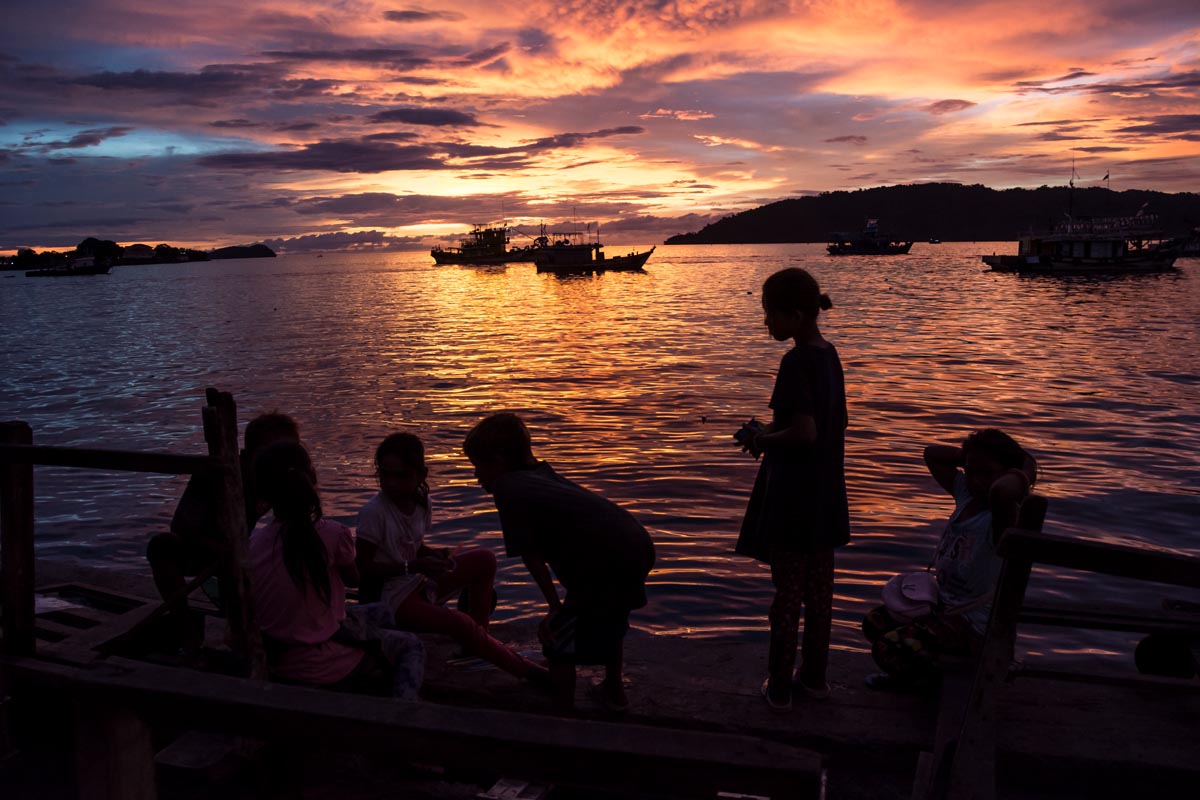 Stateless street children loiter around the Filipino market in Koto Kinabalu, getting up to mischief and searching for menial work as porters and bag carriers. Tens of thousands of undocumented immigrants live in Sabah, East Malaysia on Borneo Island. Some of them have lived there for many years with children...
Stateless street children loiter around the Filipino market in Koto Kinabalu, getting up to mischief and searching for menial work as porters and bag carriers. Tens of thousands of undocumented immigrants live in Sabah, East Malaysia on Borneo Island. Some of them have lived there for many years with children... -
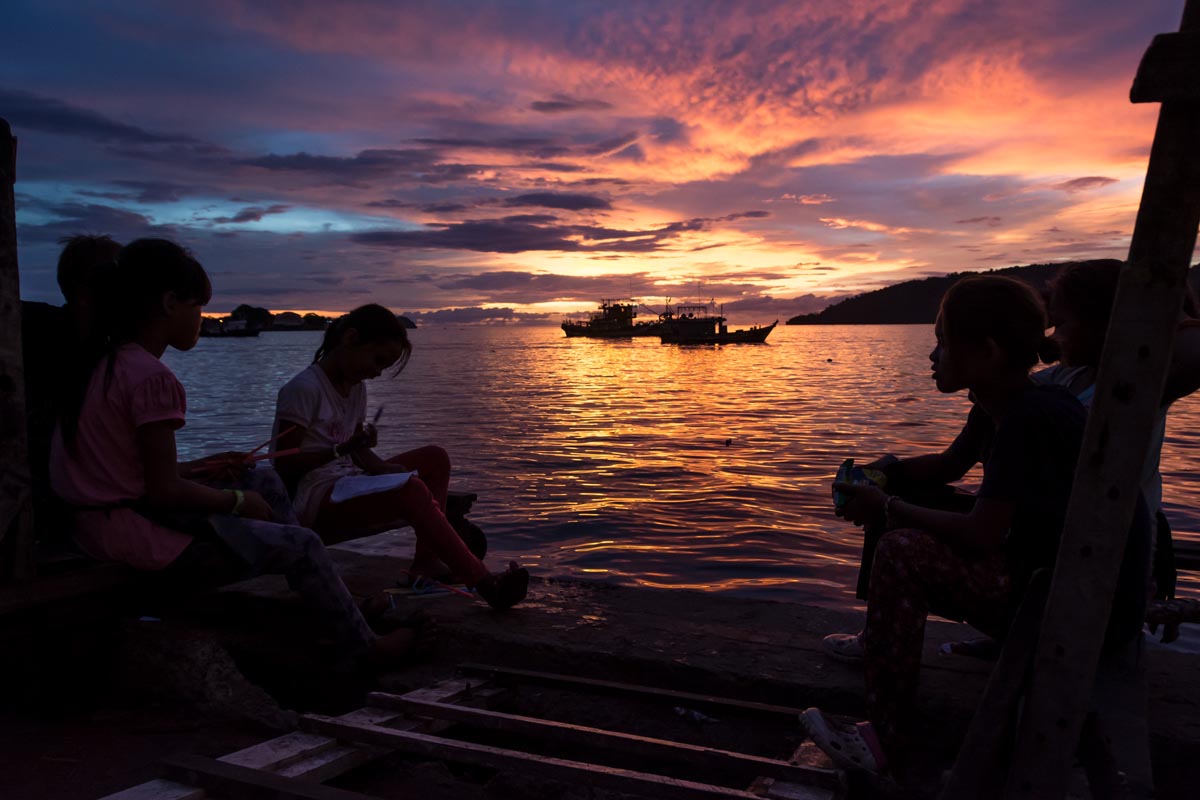 Stateless street children self-study at dusk outside the Filipino market in Koto Kinabalu. Tens of thousands of undocumented immigrants live in Sabah, East Malaysia on Borneo Island. Some of them have lived there for many years with children born there. Not eligible for official documentation they are stateless people. Lacking...
Stateless street children self-study at dusk outside the Filipino market in Koto Kinabalu. Tens of thousands of undocumented immigrants live in Sabah, East Malaysia on Borneo Island. Some of them have lived there for many years with children born there. Not eligible for official documentation they are stateless people. Lacking... -
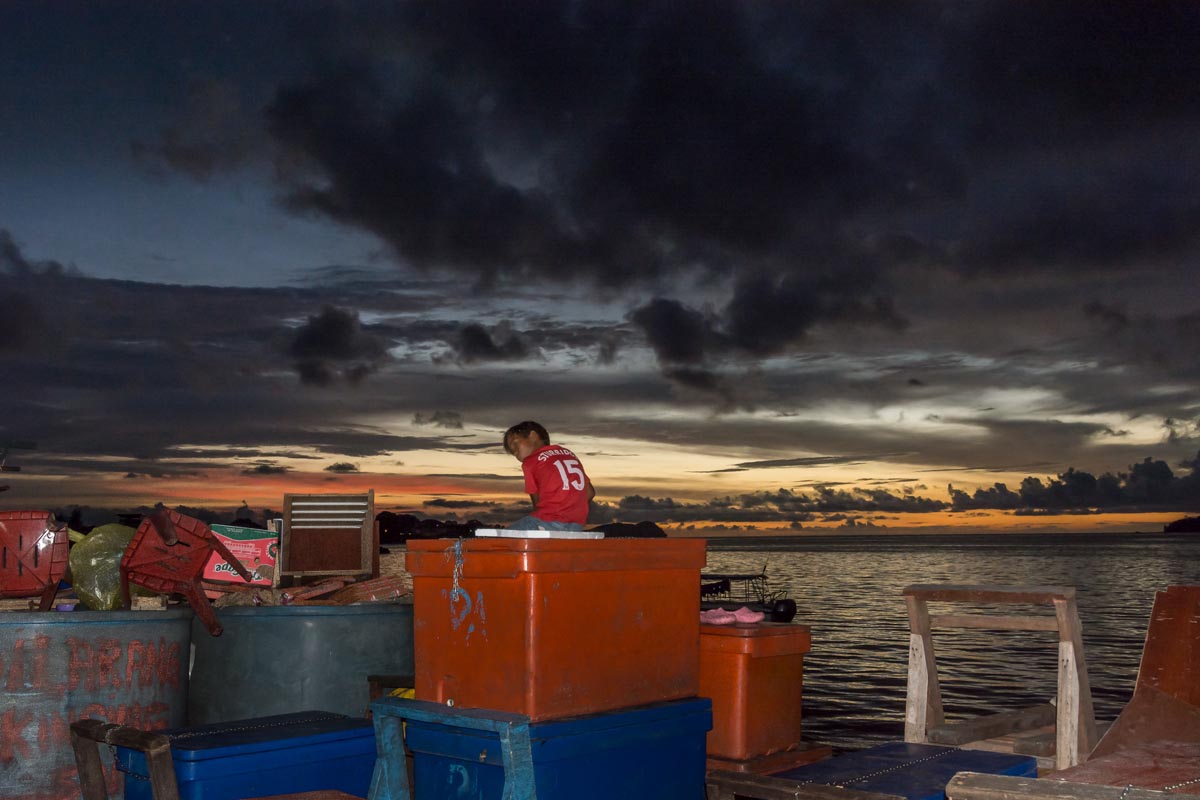 A boy sits on an icebox at dusk among the junk and garbage at the back of the Filipino market. Stateless street children loiter around the Filipino market in Koto Kinabalu, getting up to mischief and searching for menial work as porters and bag carriers. Tens of thousands of undocumented...
A boy sits on an icebox at dusk among the junk and garbage at the back of the Filipino market. Stateless street children loiter around the Filipino market in Koto Kinabalu, getting up to mischief and searching for menial work as porters and bag carriers. Tens of thousands of undocumented... -
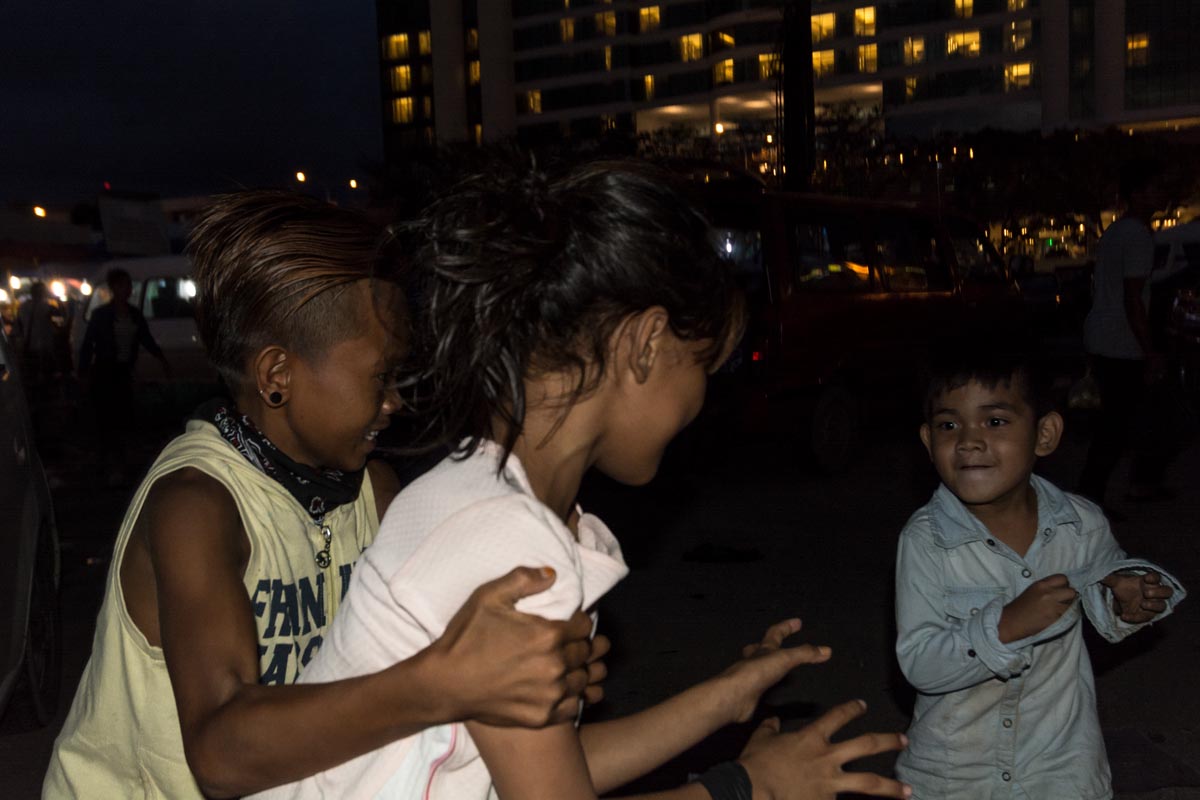 Children play fighting at night outside the Filipino market. Stateless street children loiter around the Filipino market in Koto Kinabalu, getting up to mischief and searching for menial work as porters and bag carriers. Tens of thousands of undocumented immigrants live in Sabah, East Malaysia on Borneo Island. Some of...
Children play fighting at night outside the Filipino market. Stateless street children loiter around the Filipino market in Koto Kinabalu, getting up to mischief and searching for menial work as porters and bag carriers. Tens of thousands of undocumented immigrants live in Sabah, East Malaysia on Borneo Island. Some of... -
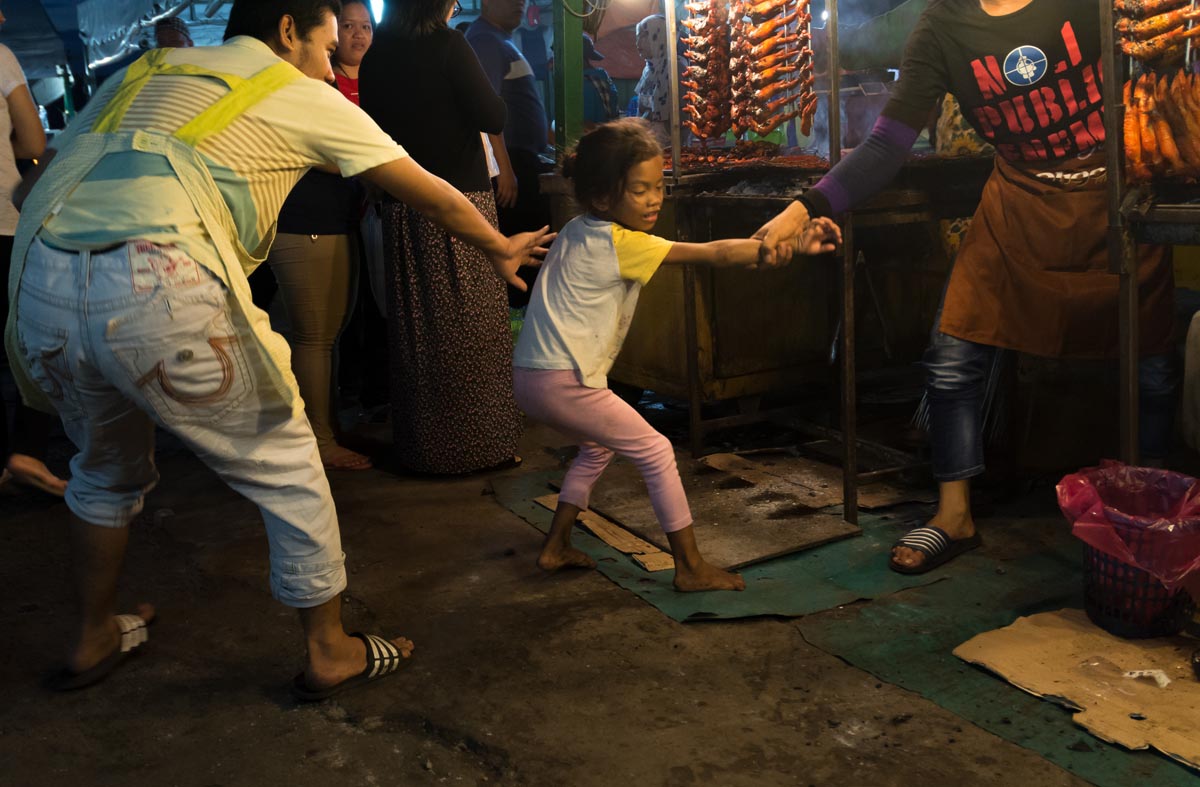 A girl is caught red handed stealing sate chicken in the Filipino market. Stateless street children loiter around the Filipino market in Koto Kinabalu, getting up to mischief and searching for menial work as porters and bag carriers. Tens of thousands of undocumented immigrants live in Sabah, East Malaysia on...
A girl is caught red handed stealing sate chicken in the Filipino market. Stateless street children loiter around the Filipino market in Koto Kinabalu, getting up to mischief and searching for menial work as porters and bag carriers. Tens of thousands of undocumented immigrants live in Sabah, East Malaysia on... -
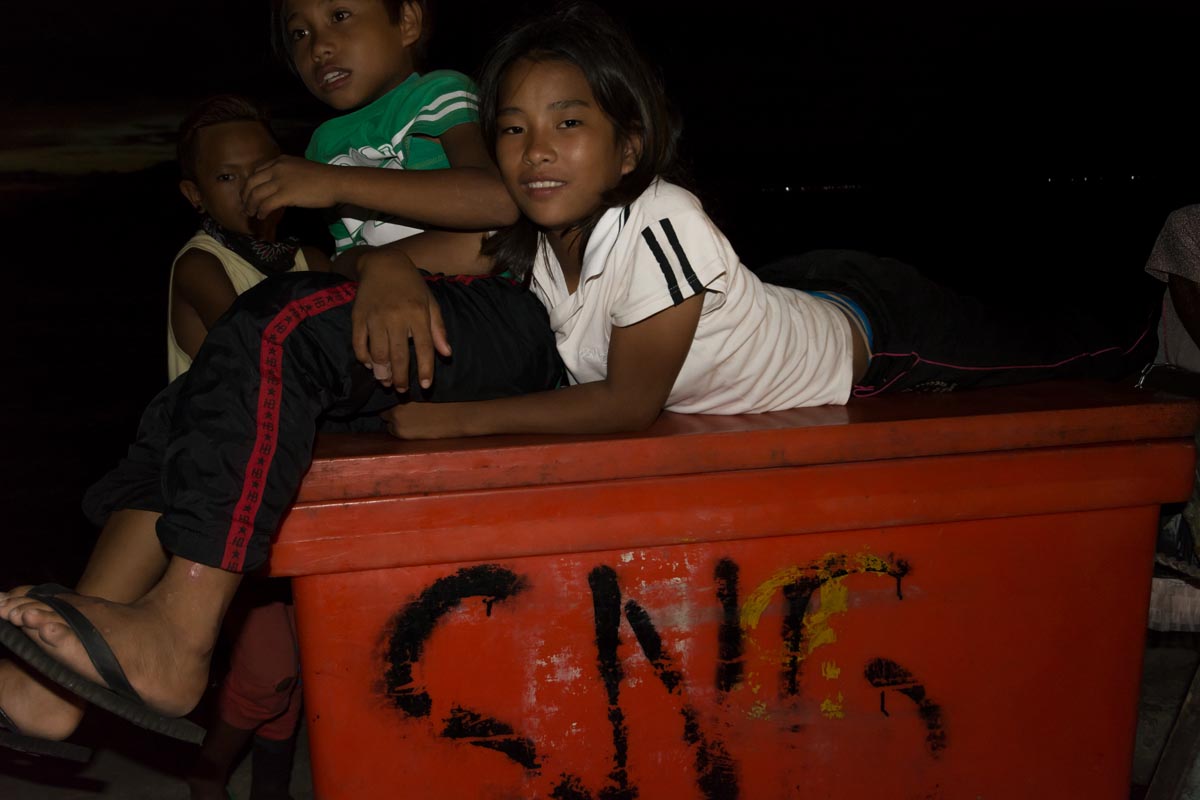 Stateless street children loiter around the Filipino market in Koto Kinabalu, getting up to mischief and searching for menial work as porters and bag carriers. Tens of thousands of undocumented immigrants live in Sabah, East Malaysia on Borneo Island. Some of them have lived there for many years with children...
Stateless street children loiter around the Filipino market in Koto Kinabalu, getting up to mischief and searching for menial work as porters and bag carriers. Tens of thousands of undocumented immigrants live in Sabah, East Malaysia on Borneo Island. Some of them have lived there for many years with children... -
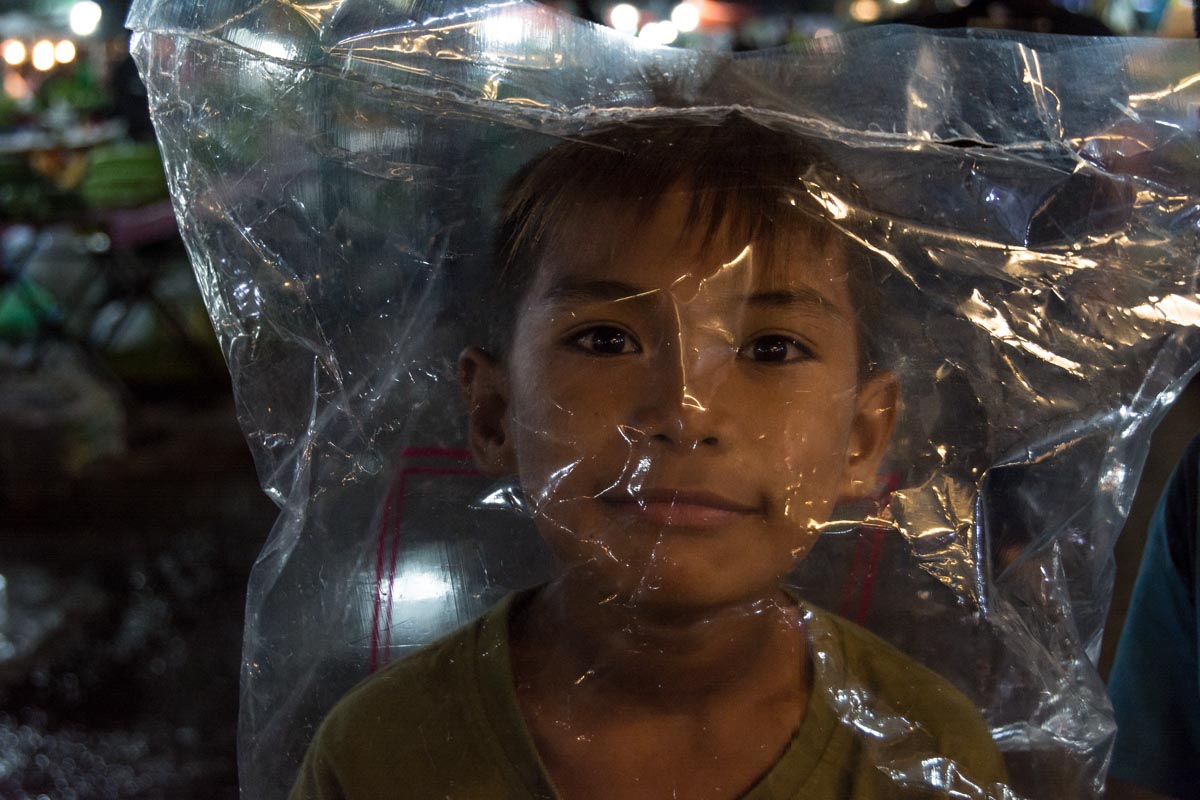 A boy plays in the Filipino market with a plastic bag over his head. Having received no school education he is unaware of the dangers of suffocation. Stateless street children loiter around the Filipino market in Koto Kinabalu, getting up to mischief and searching for menial work as porters and...
A boy plays in the Filipino market with a plastic bag over his head. Having received no school education he is unaware of the dangers of suffocation. Stateless street children loiter around the Filipino market in Koto Kinabalu, getting up to mischief and searching for menial work as porters and... -
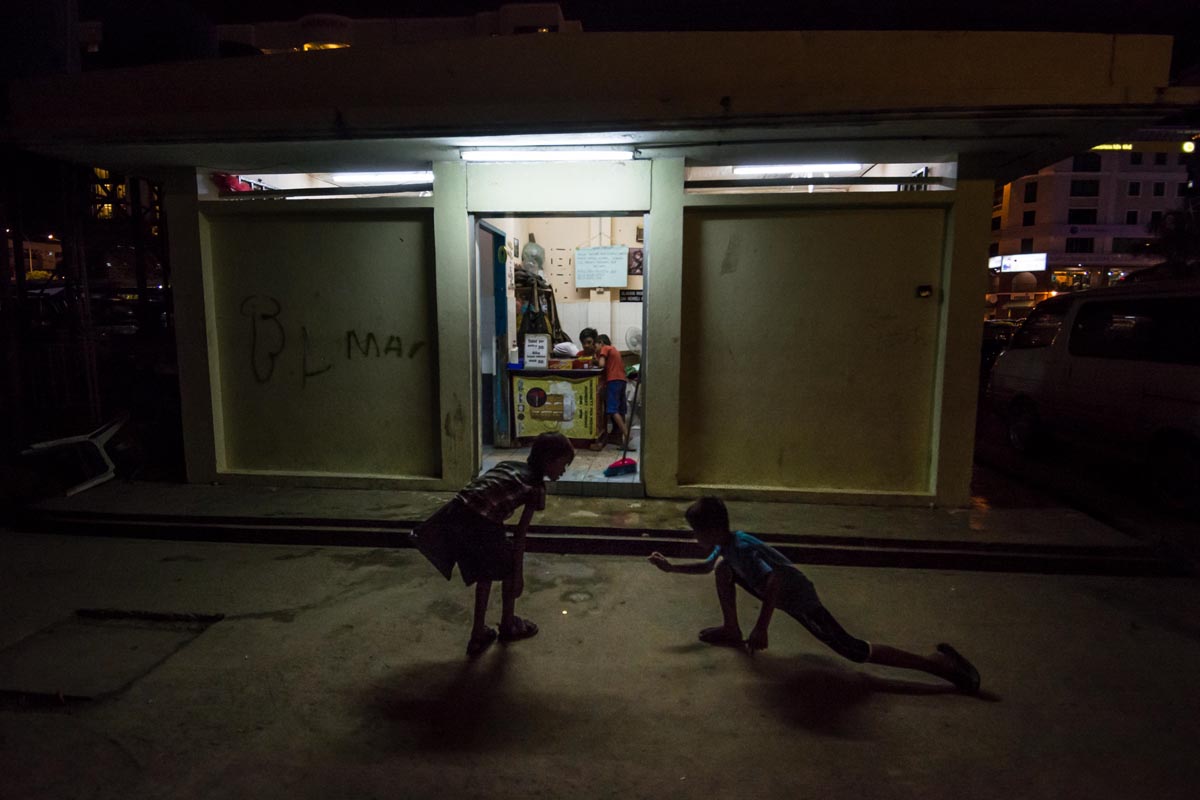 Two boys play a favourite game of 'coin' outside a public toilet in Kota Kinabalu, capital of Sabah. Stateless street children loiter around the Filipino market, getting up to mischief and searching for menial work as porters and bag carriers. Tens of thousands of undocumented immigrants live in Sabah, East...
Two boys play a favourite game of 'coin' outside a public toilet in Kota Kinabalu, capital of Sabah. Stateless street children loiter around the Filipino market, getting up to mischief and searching for menial work as porters and bag carriers. Tens of thousands of undocumented immigrants live in Sabah, East...


